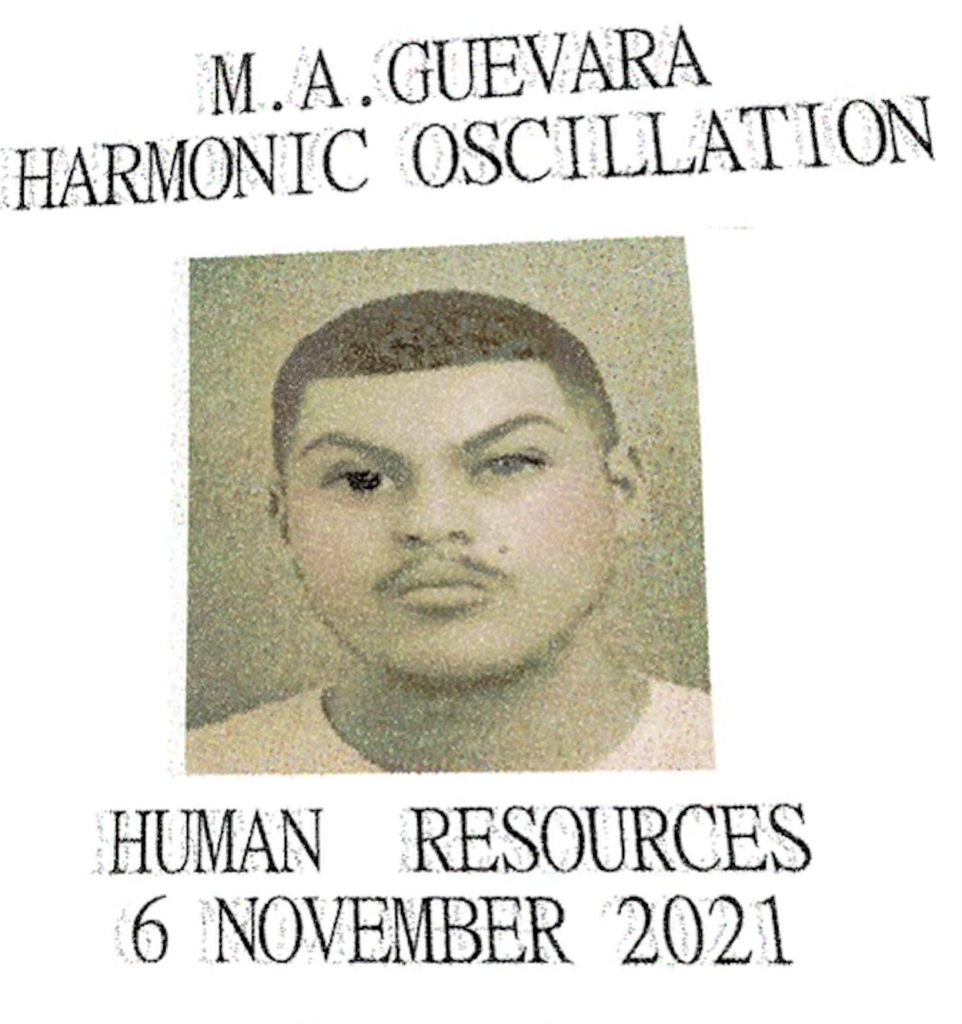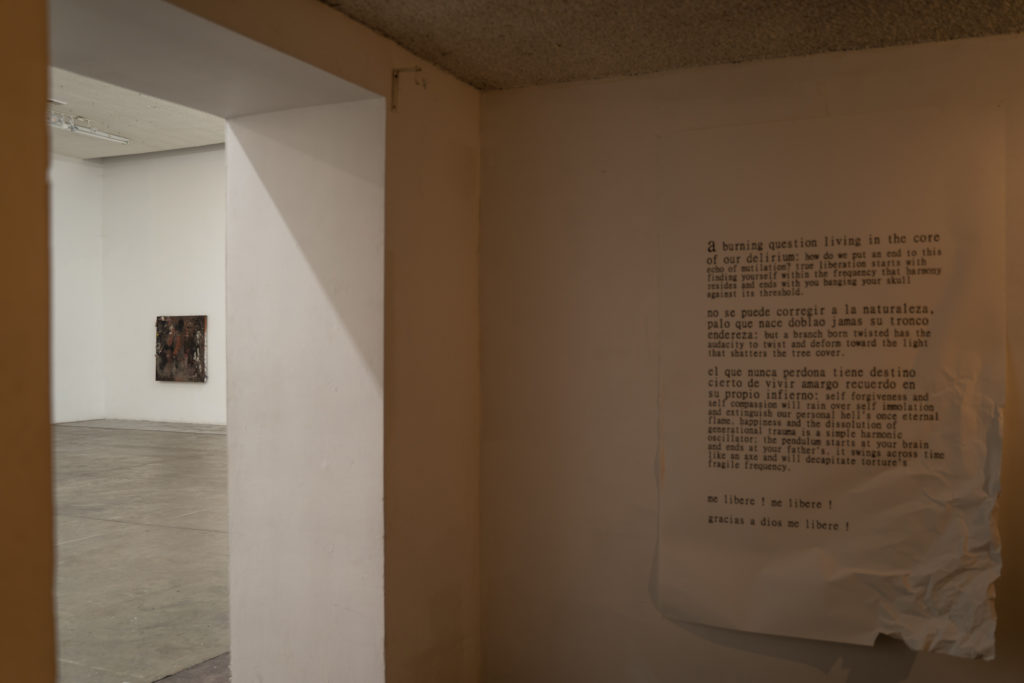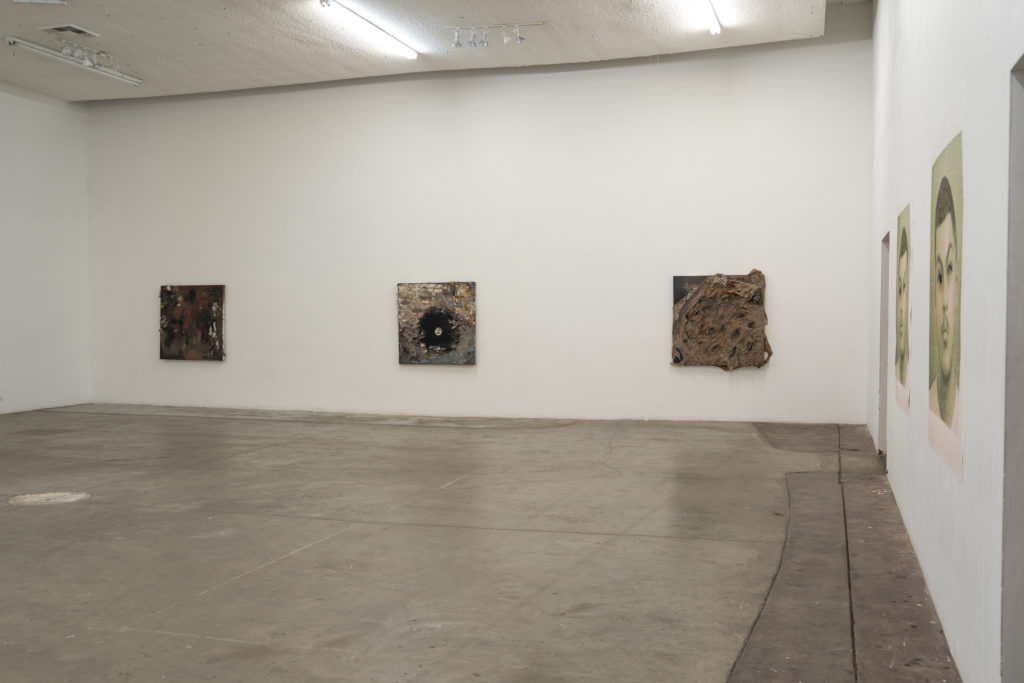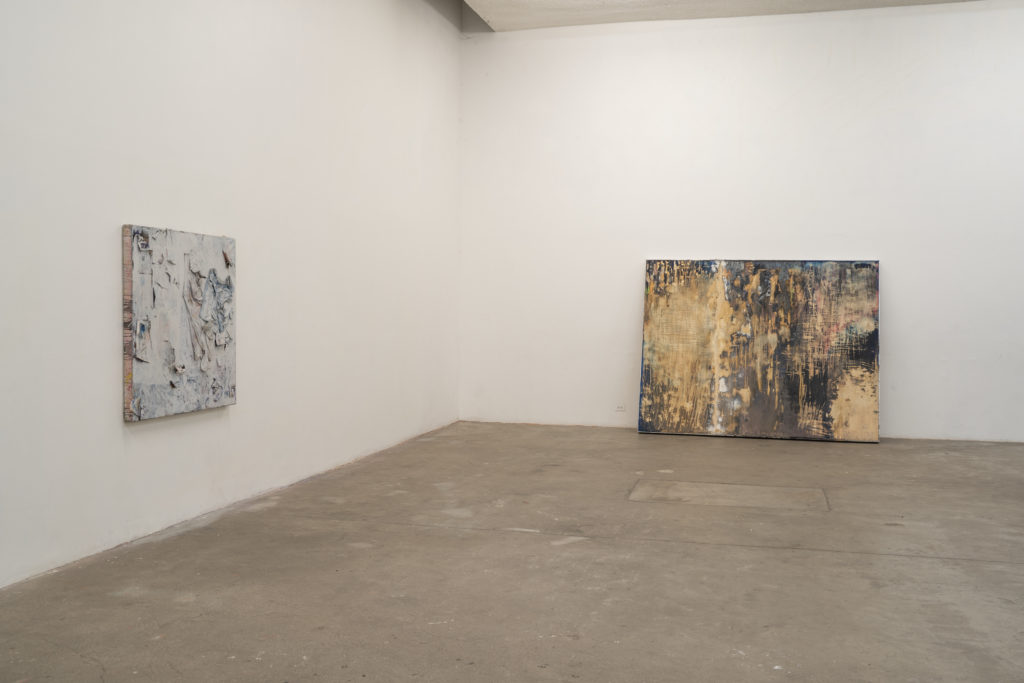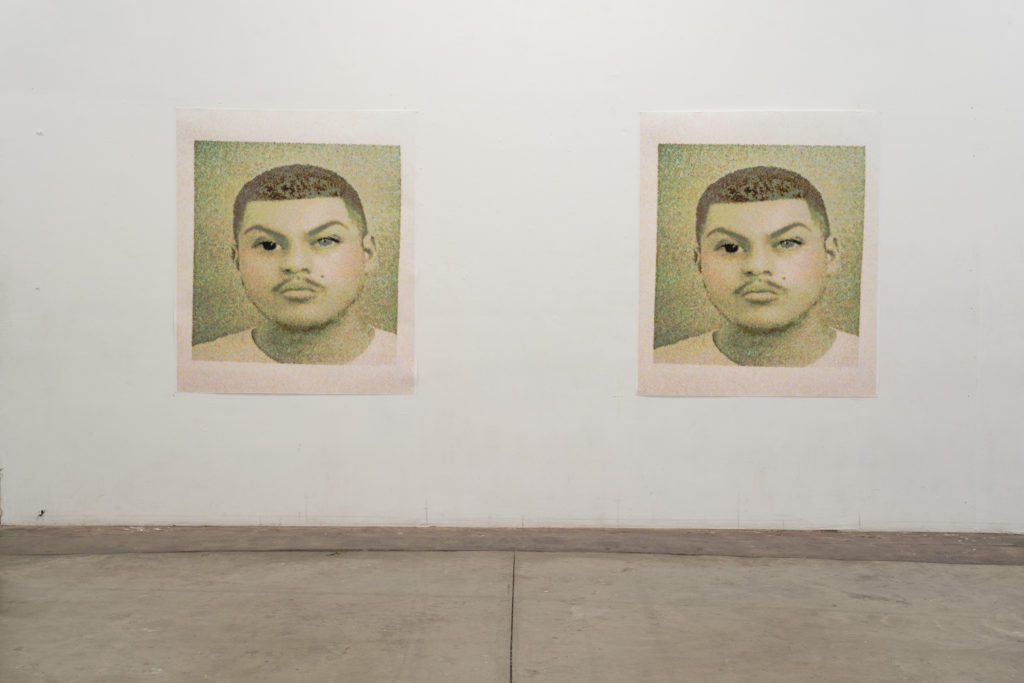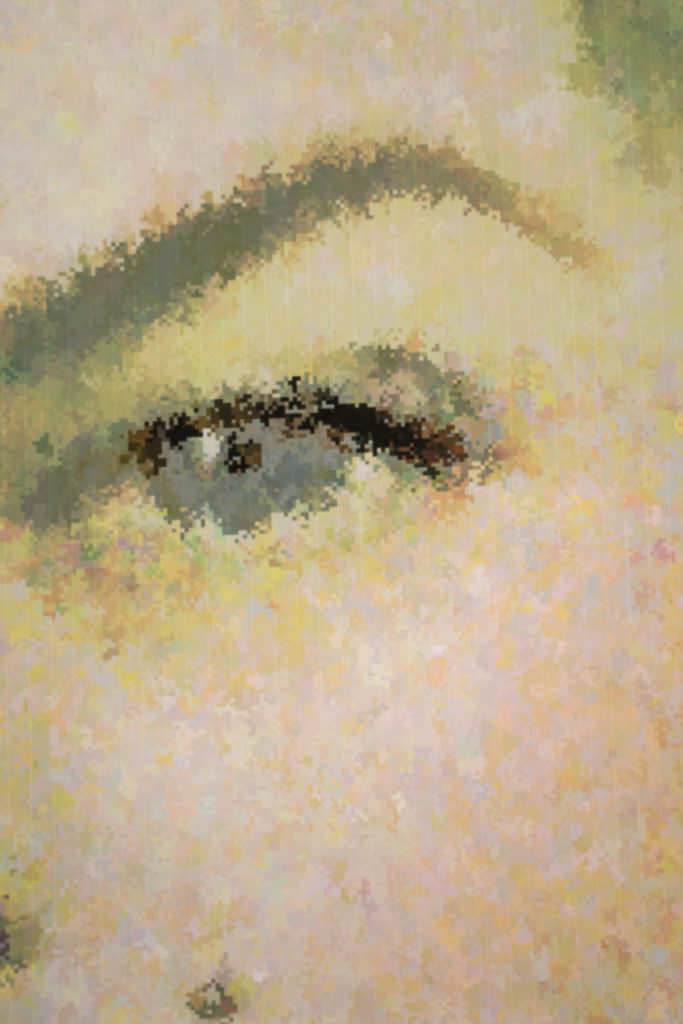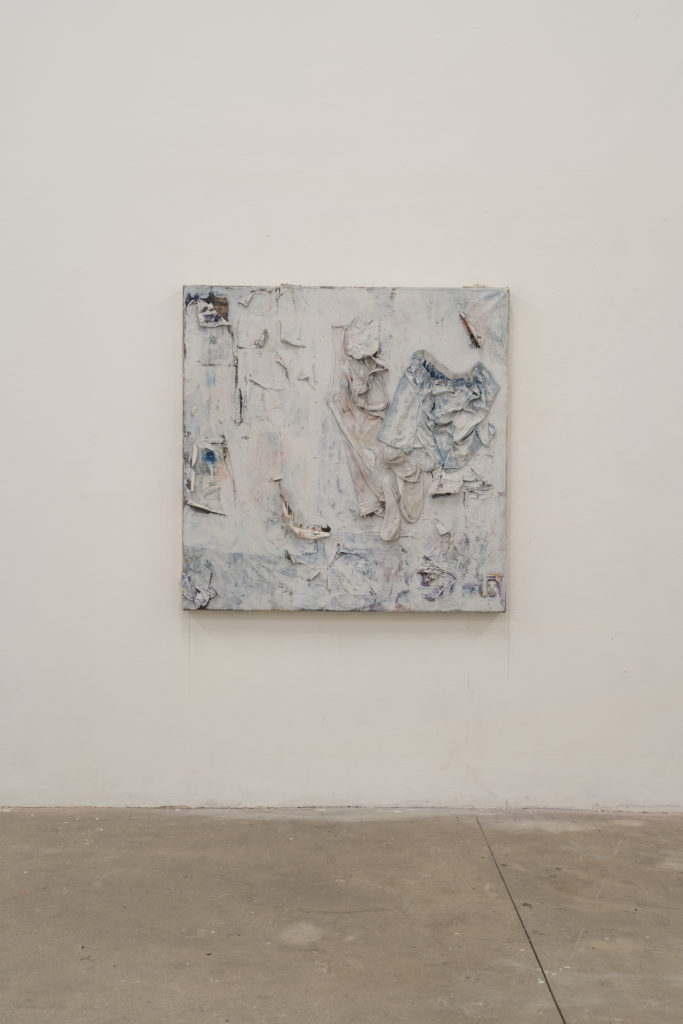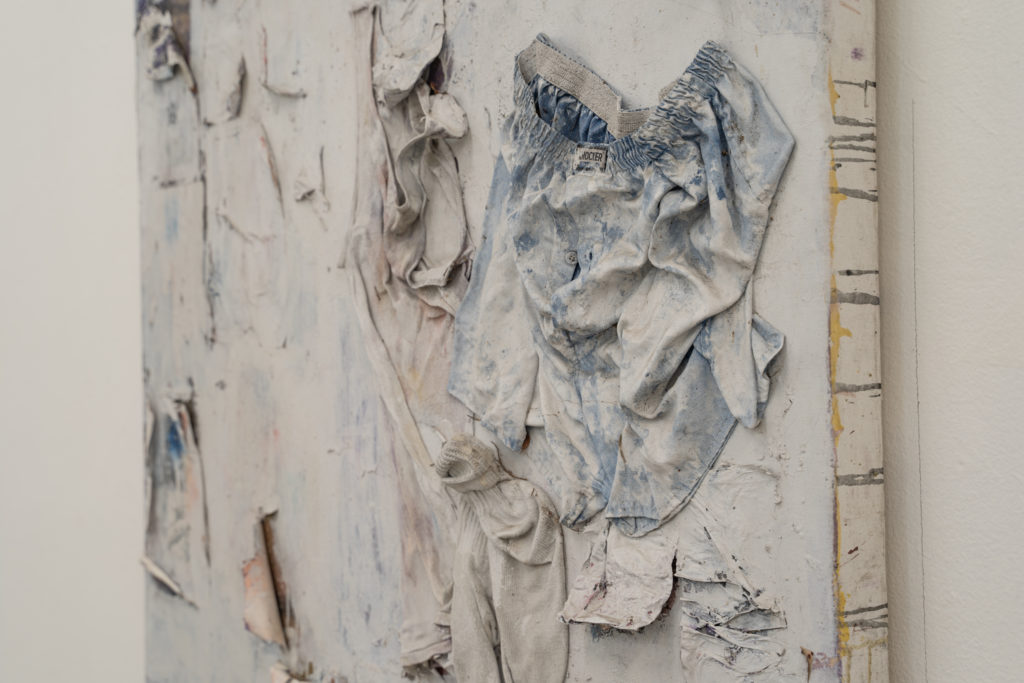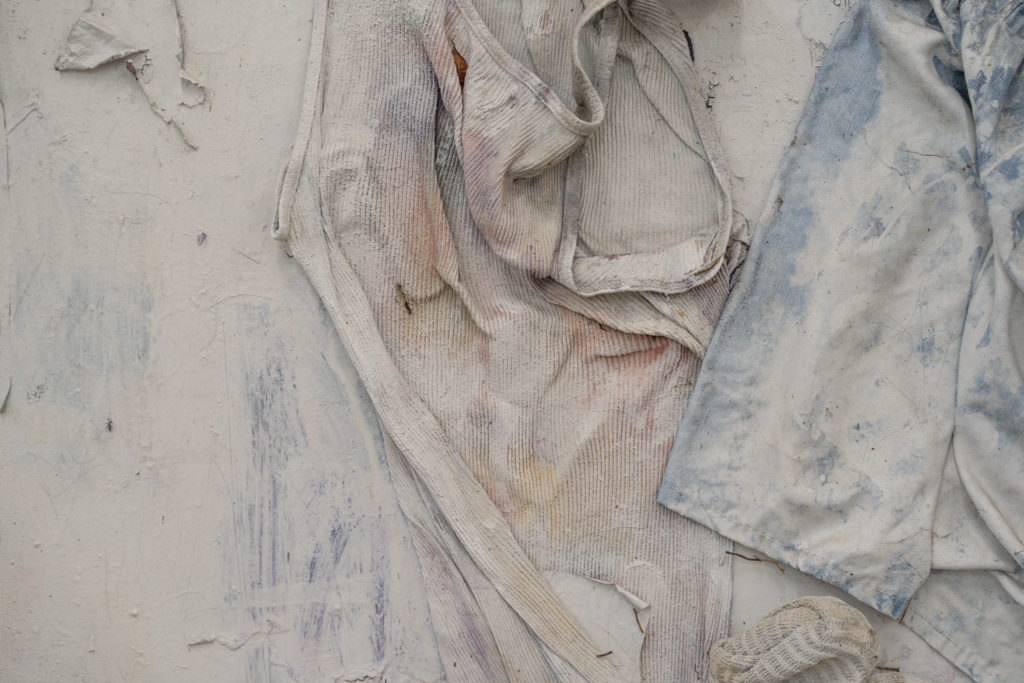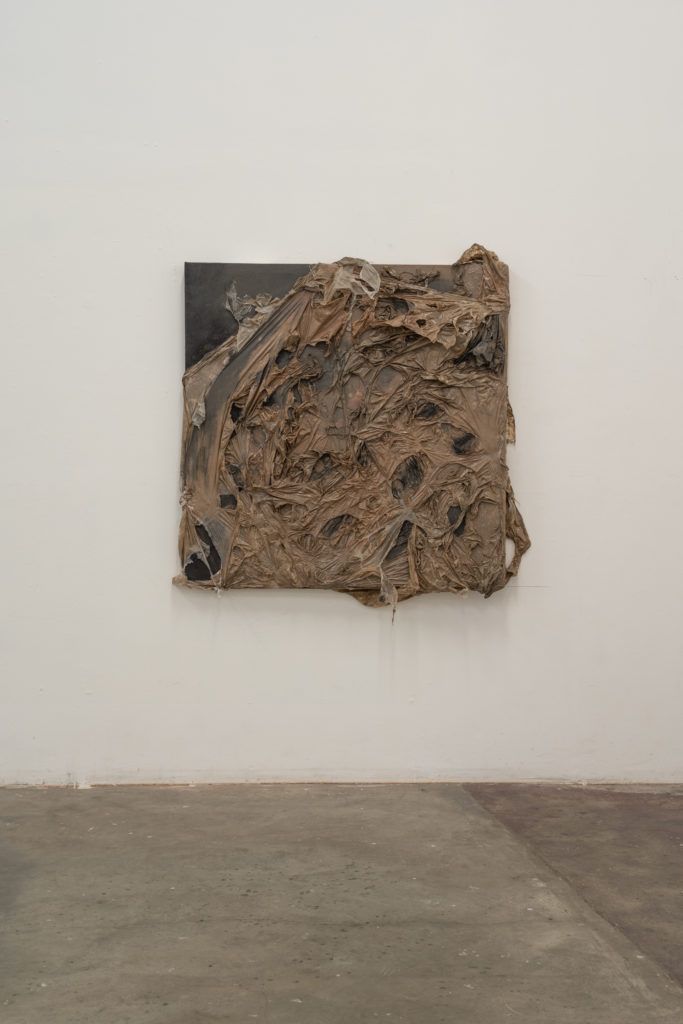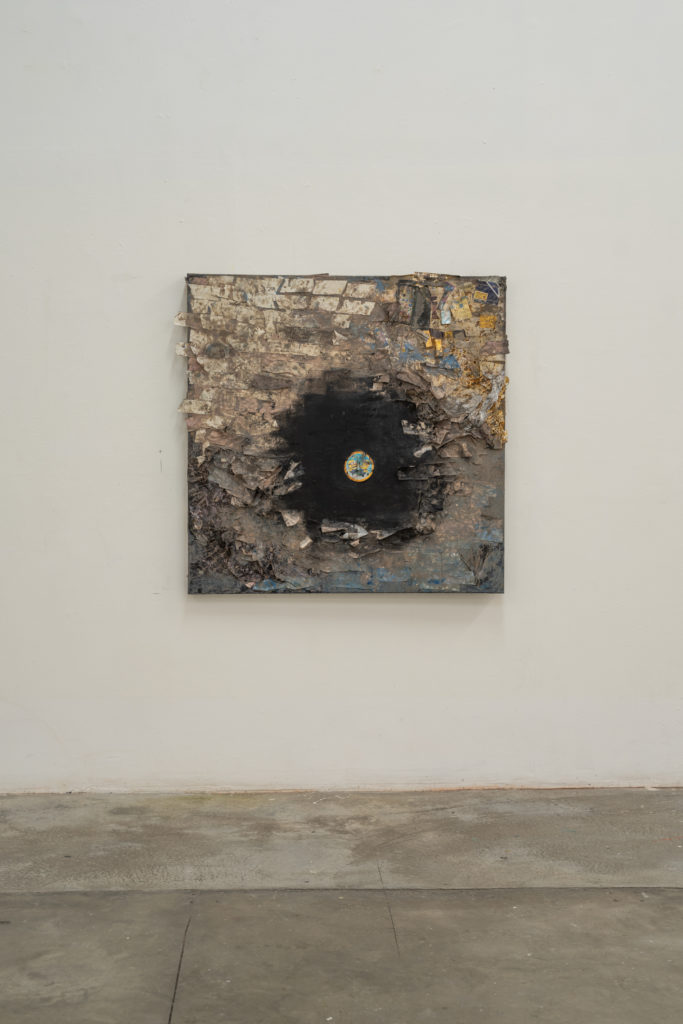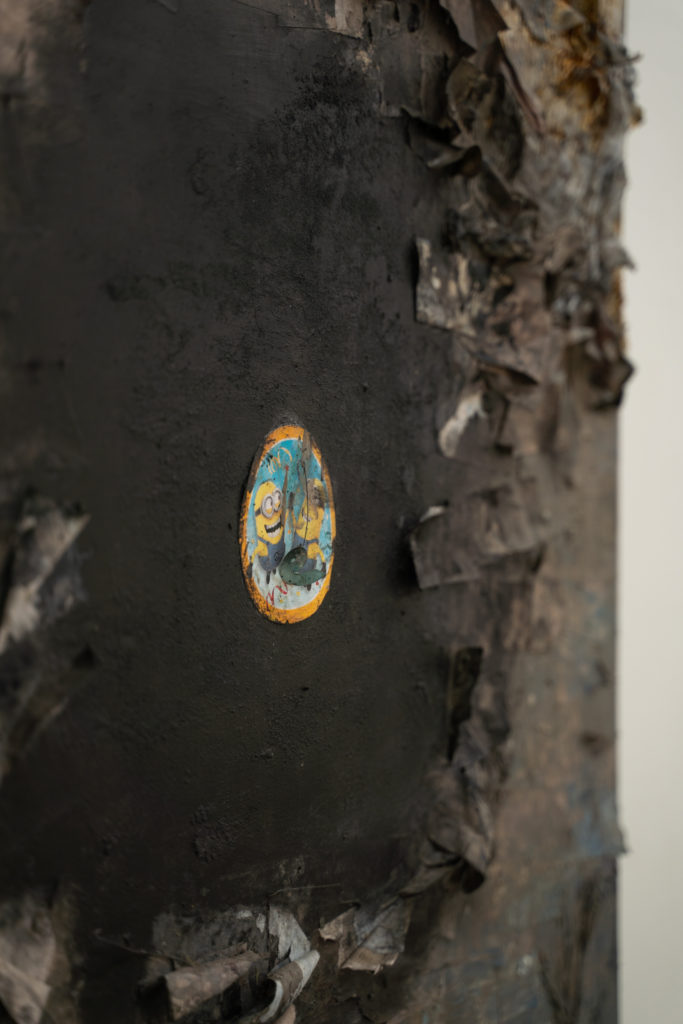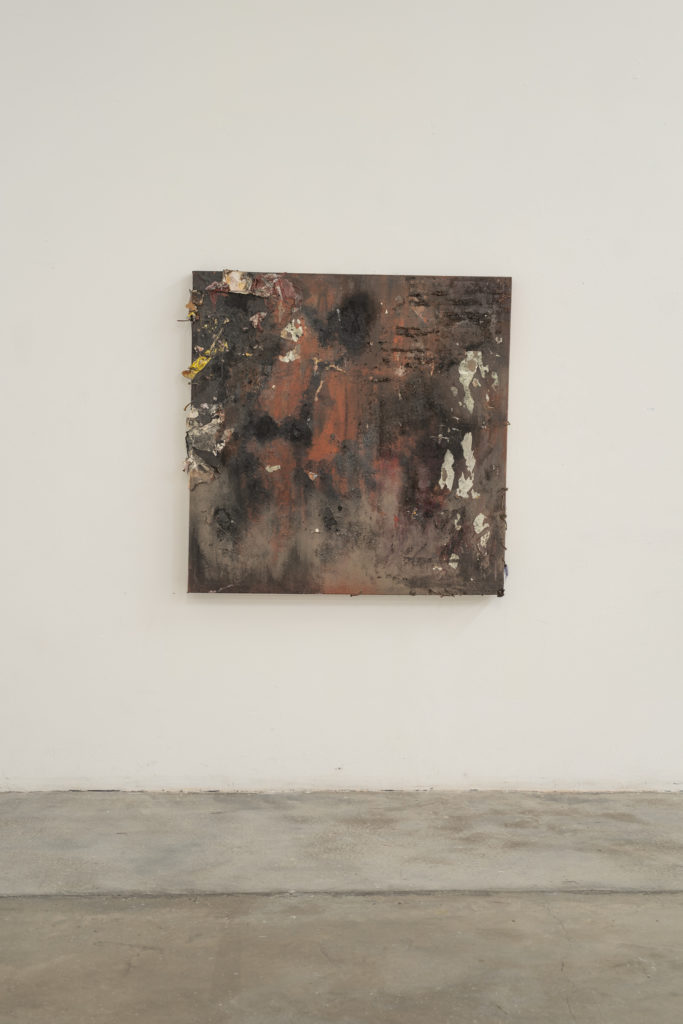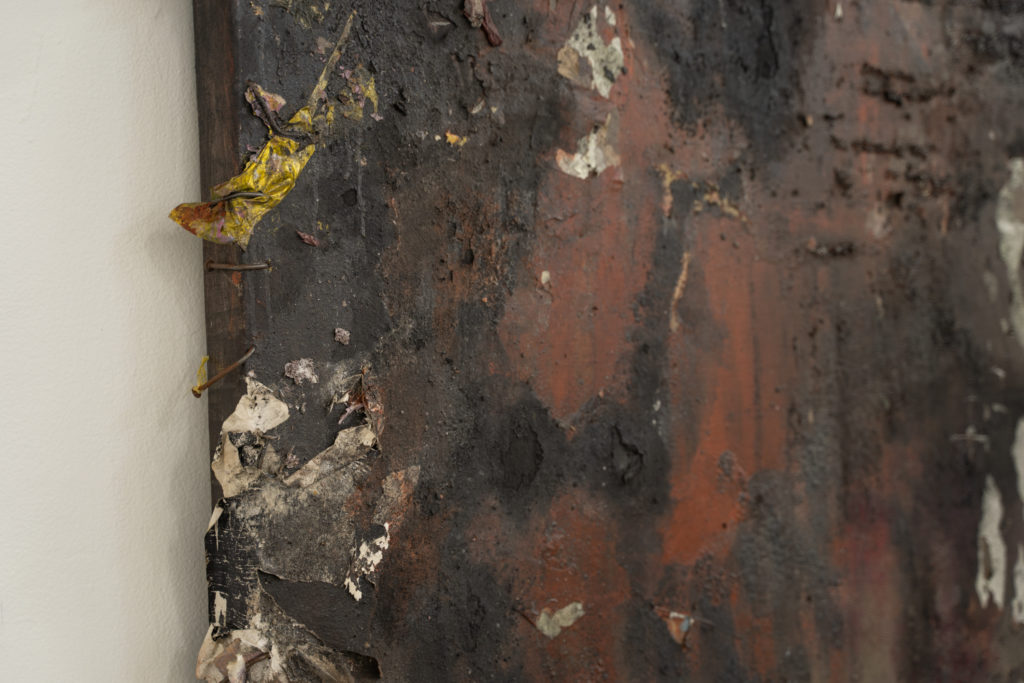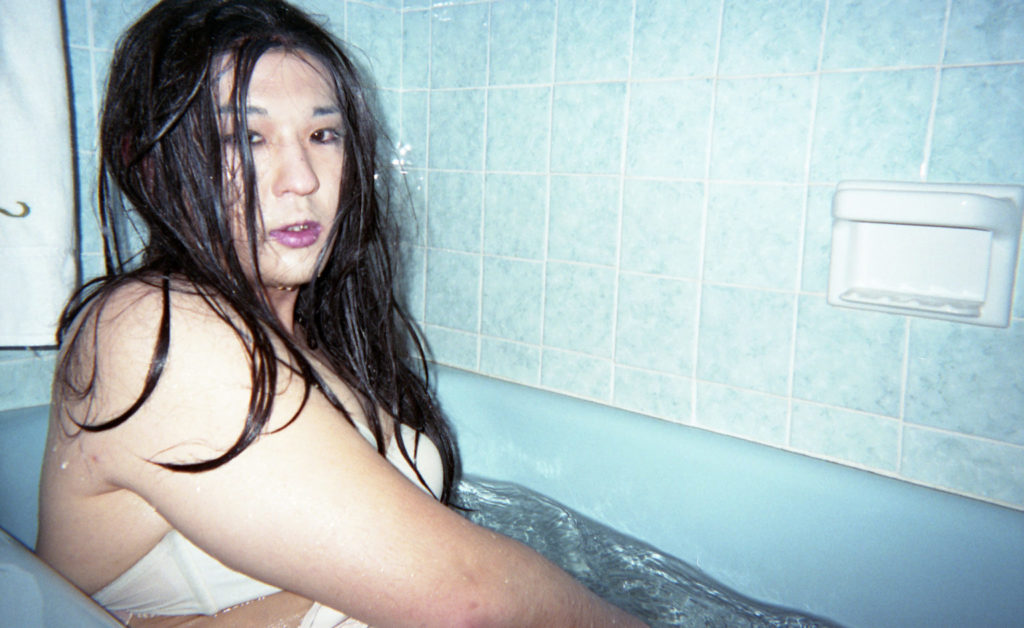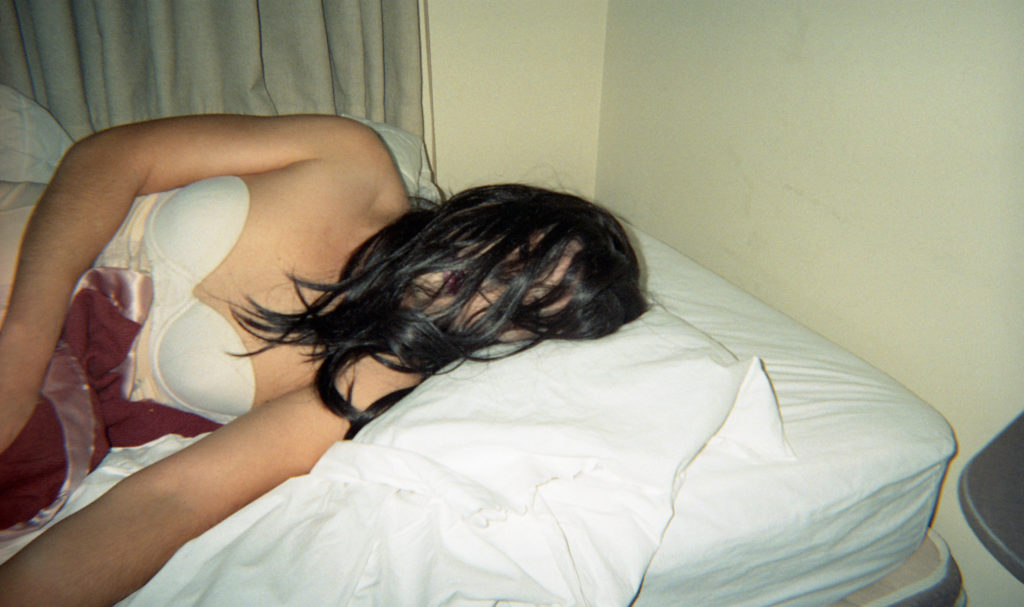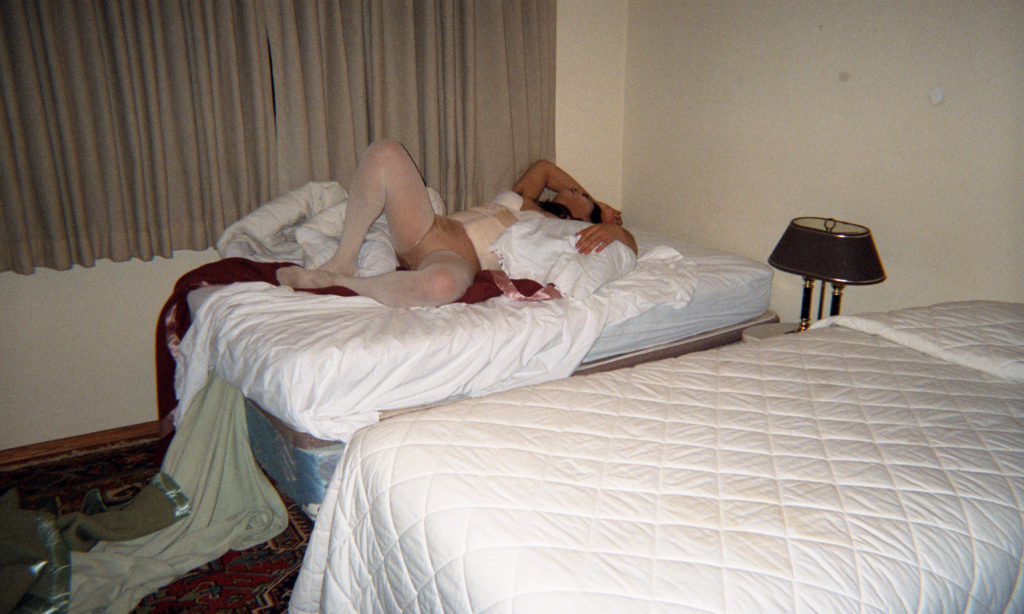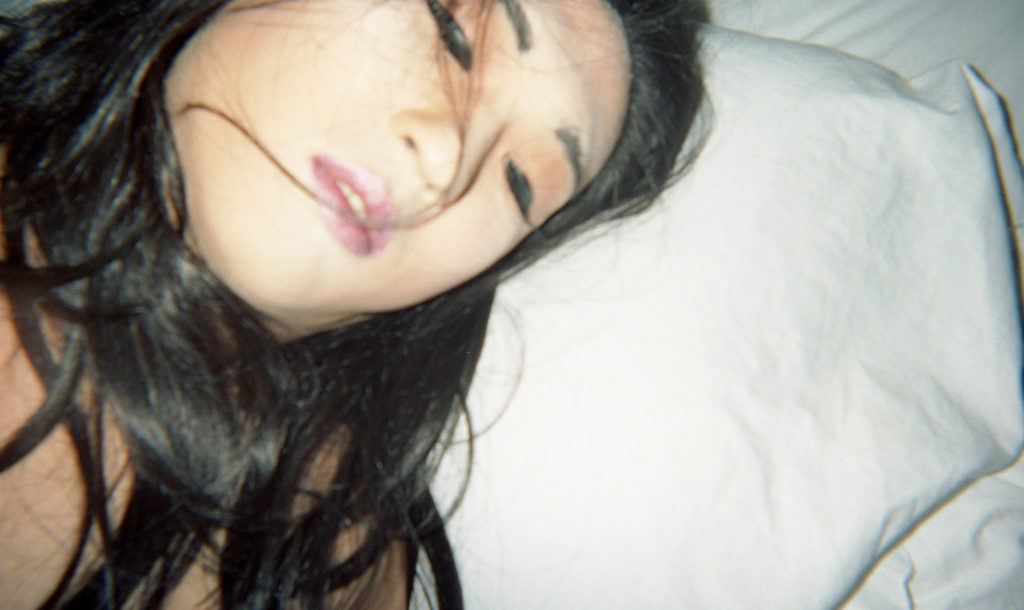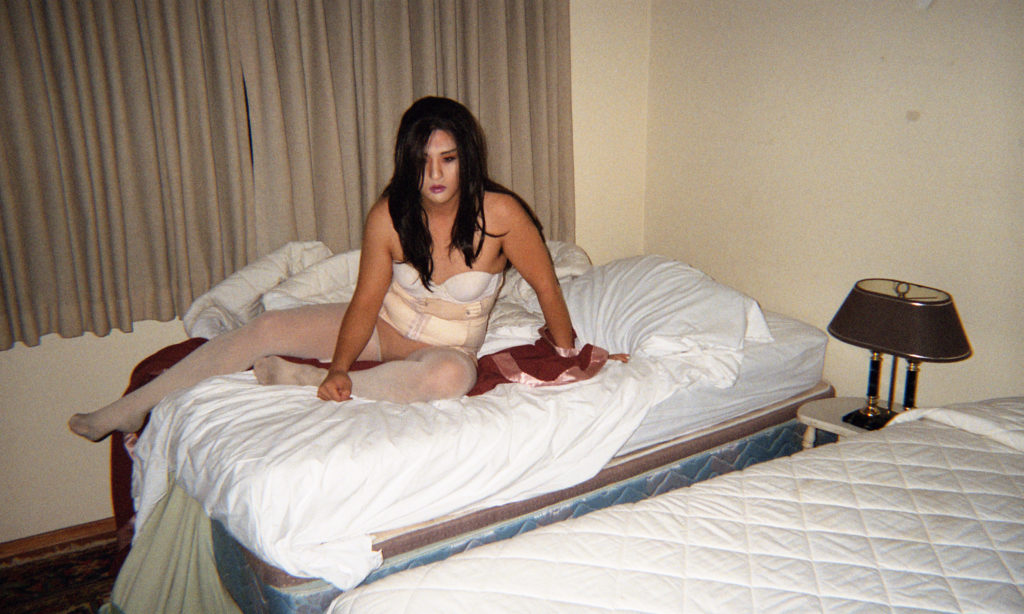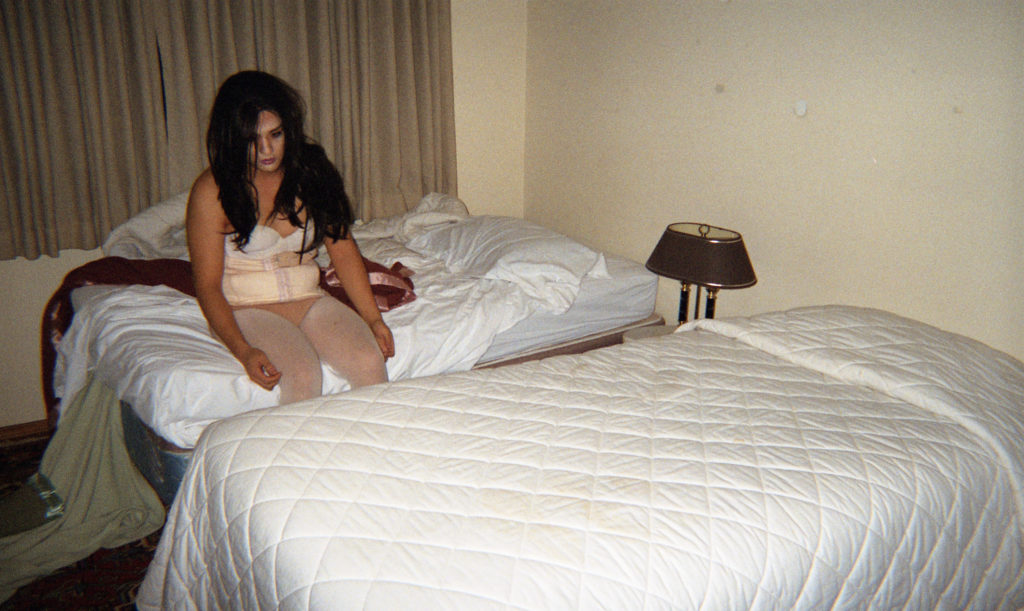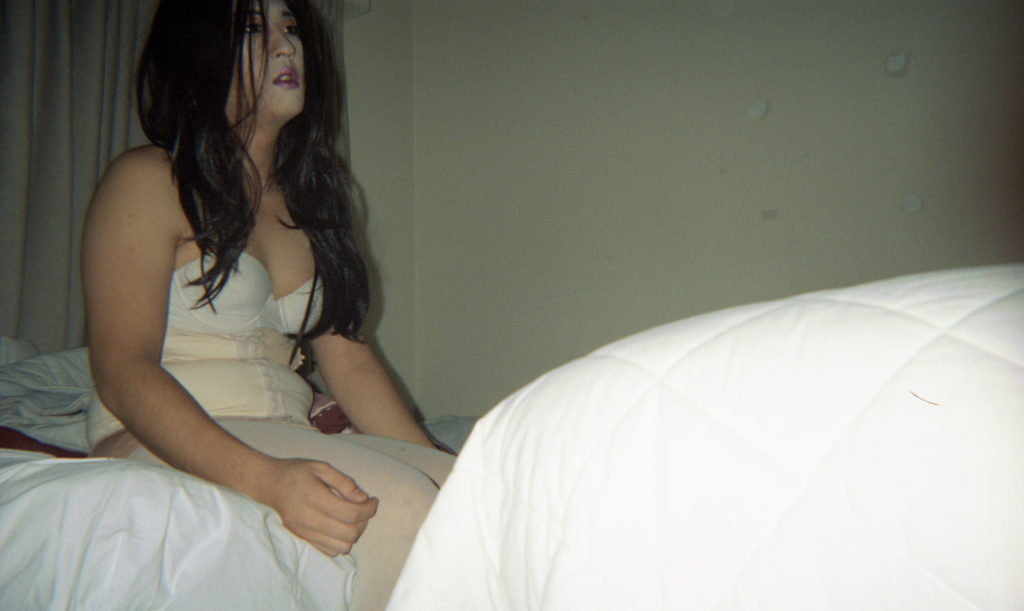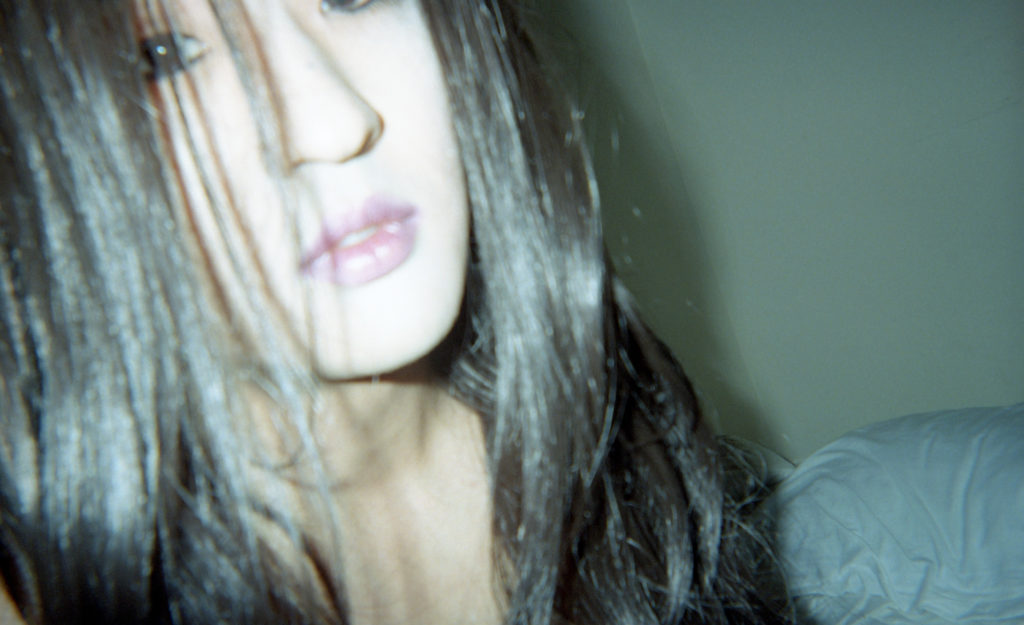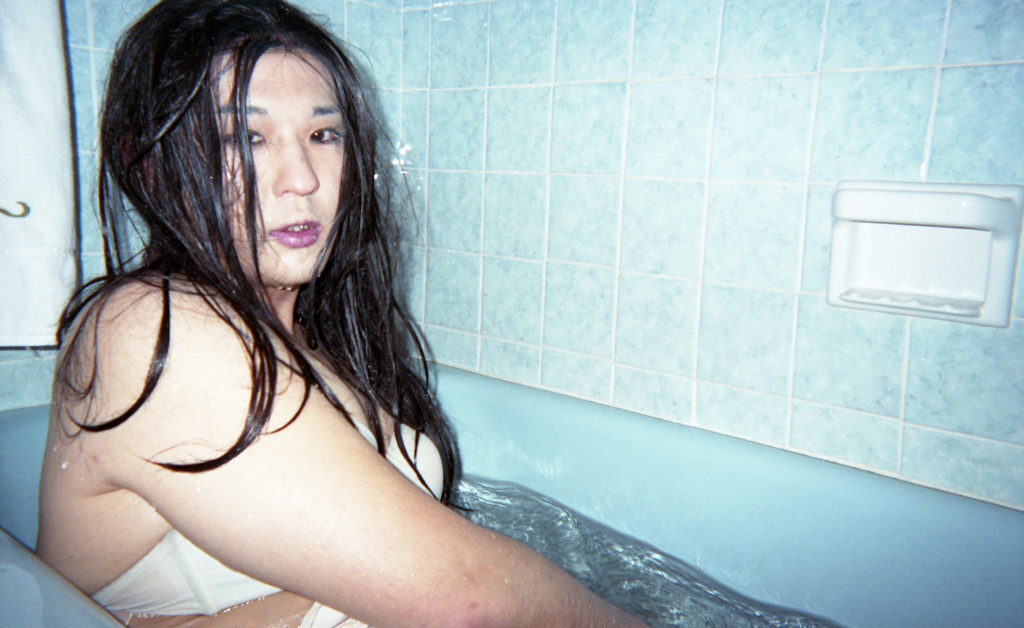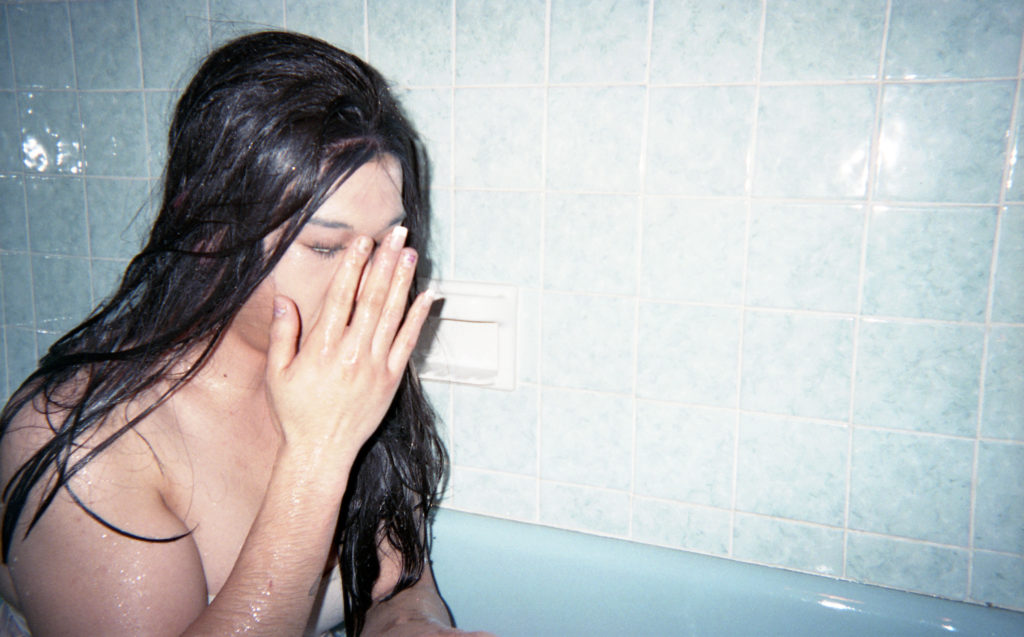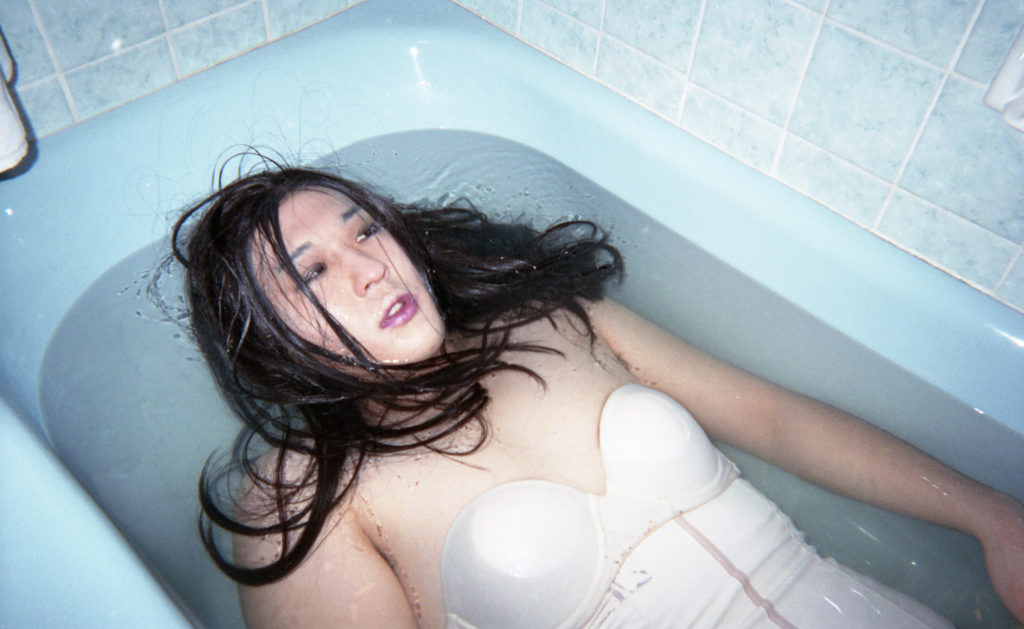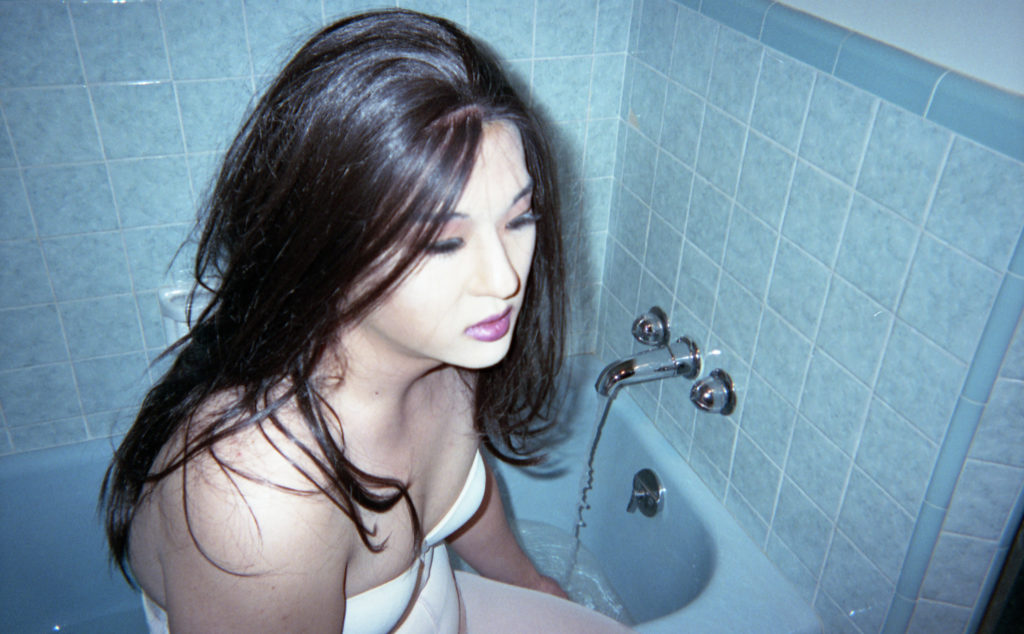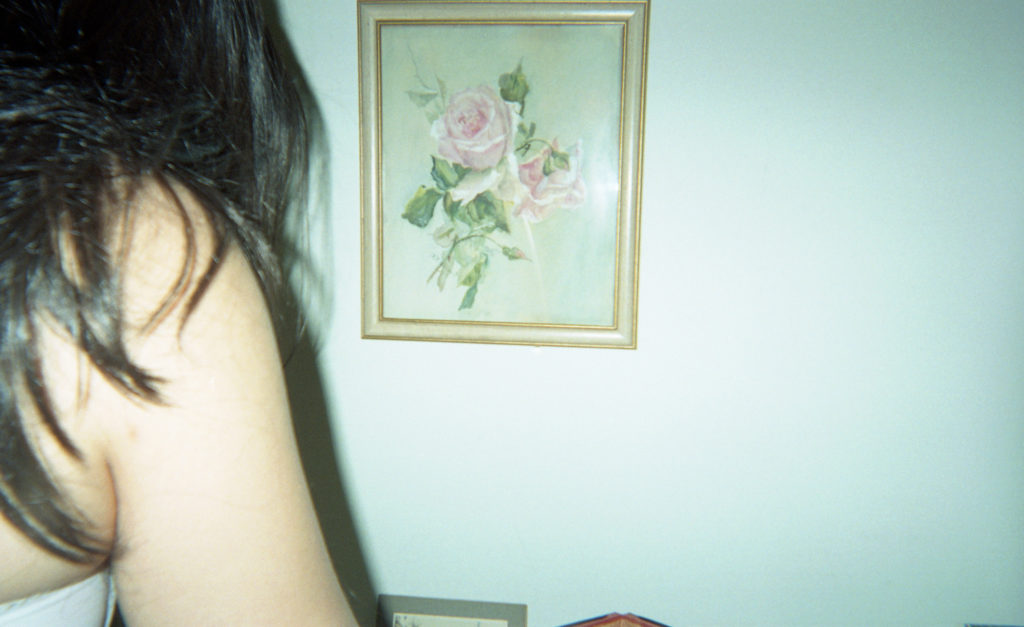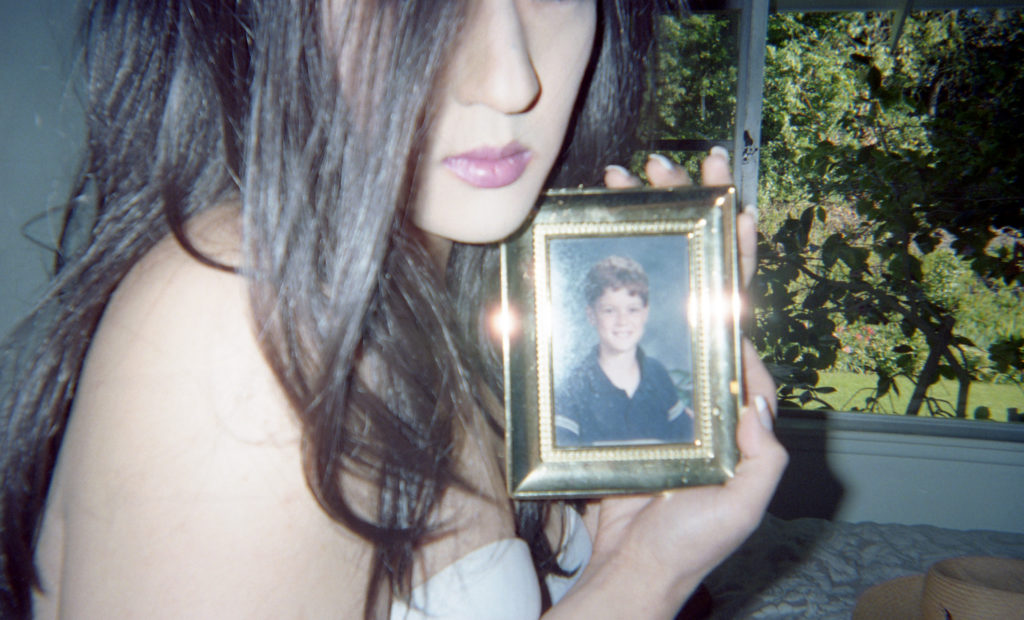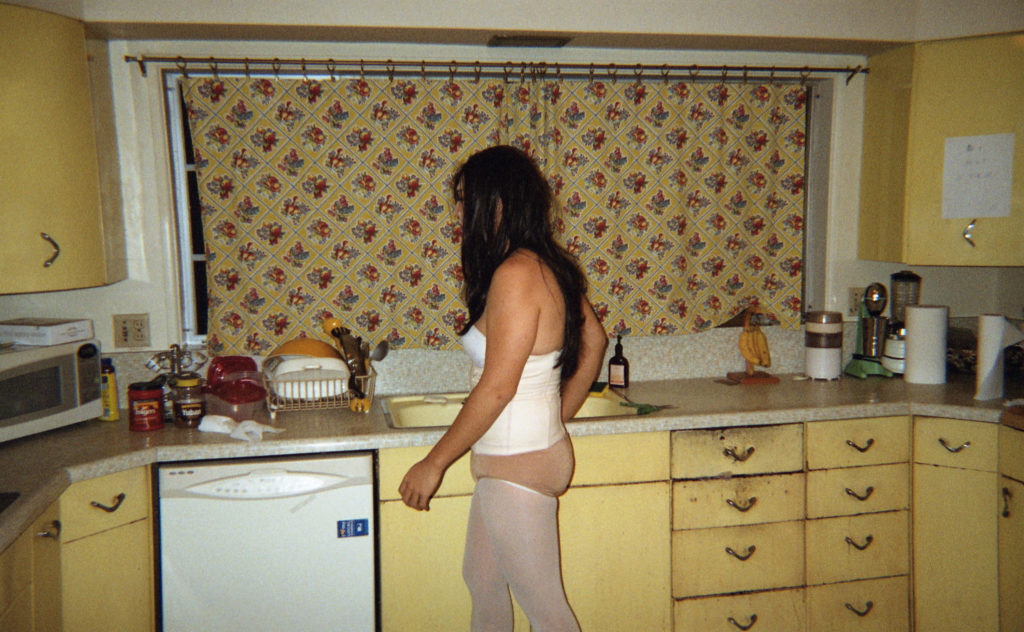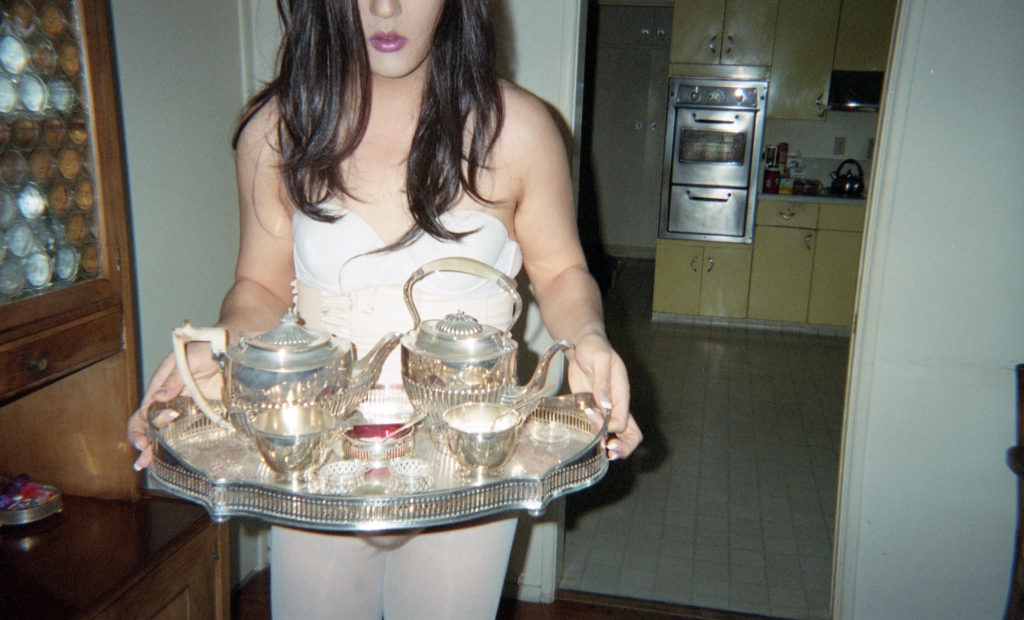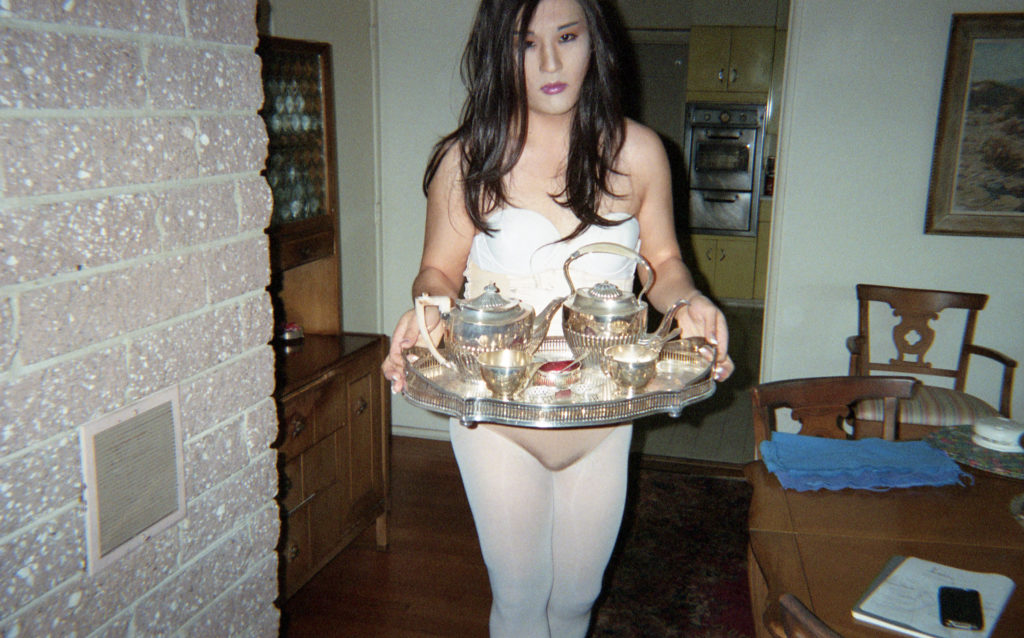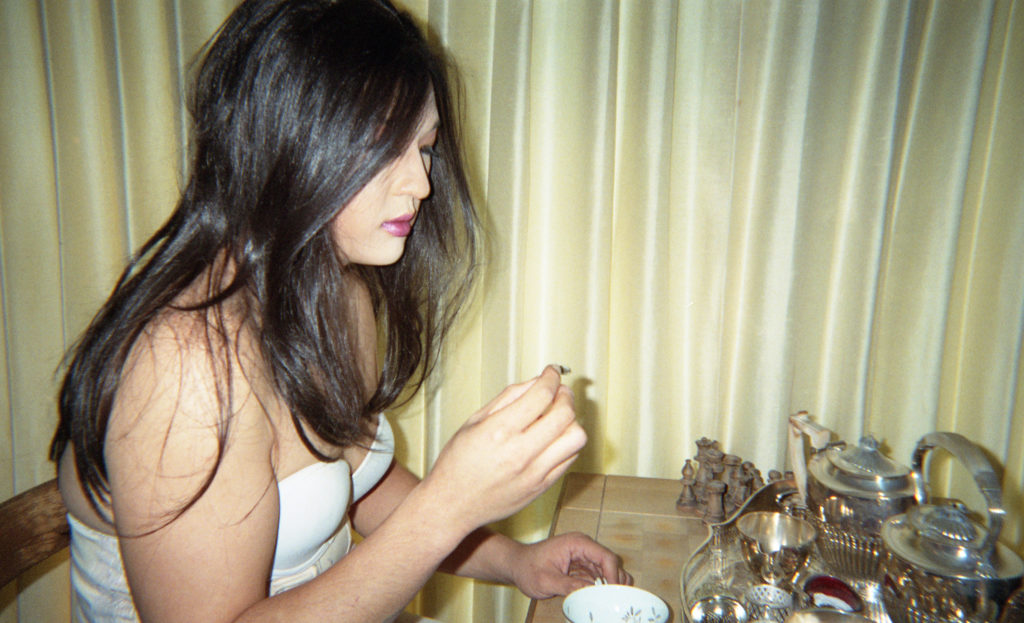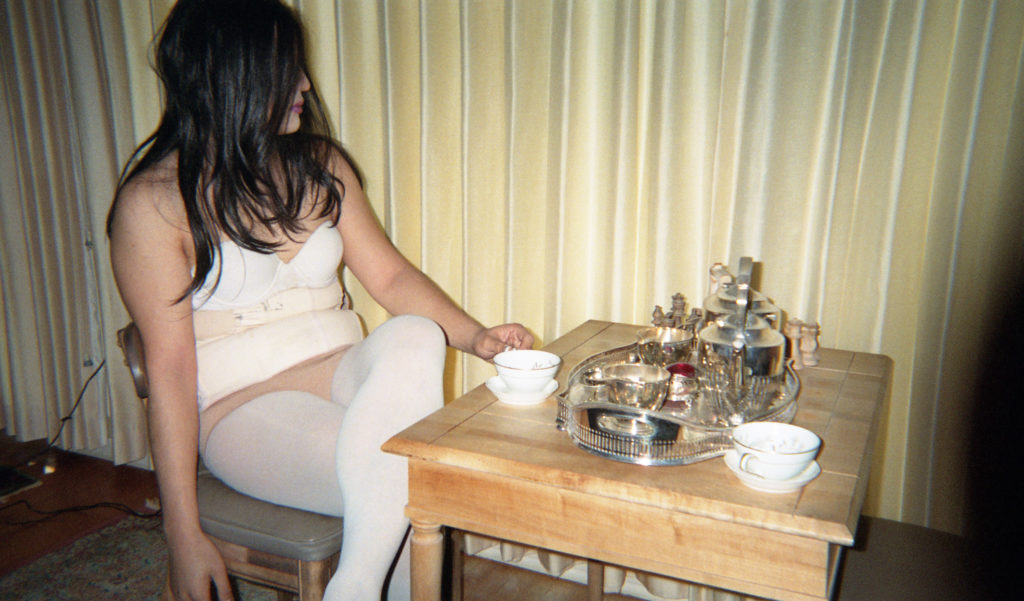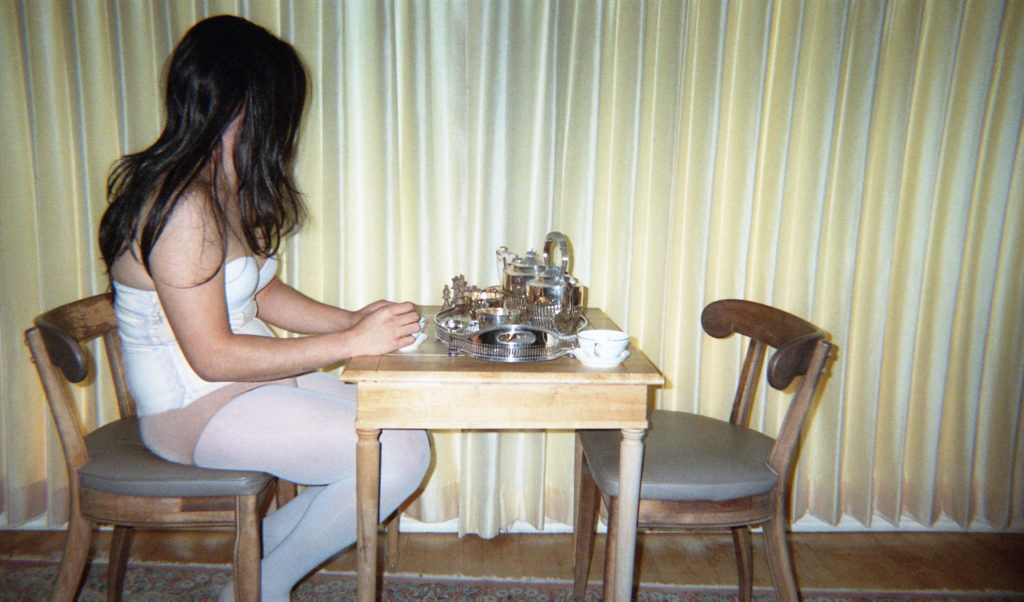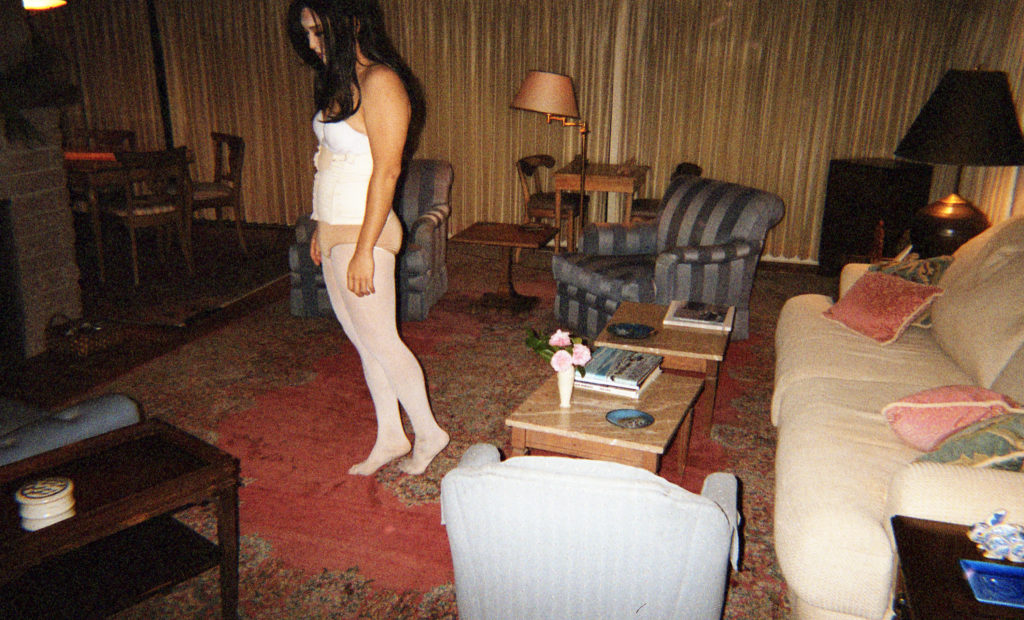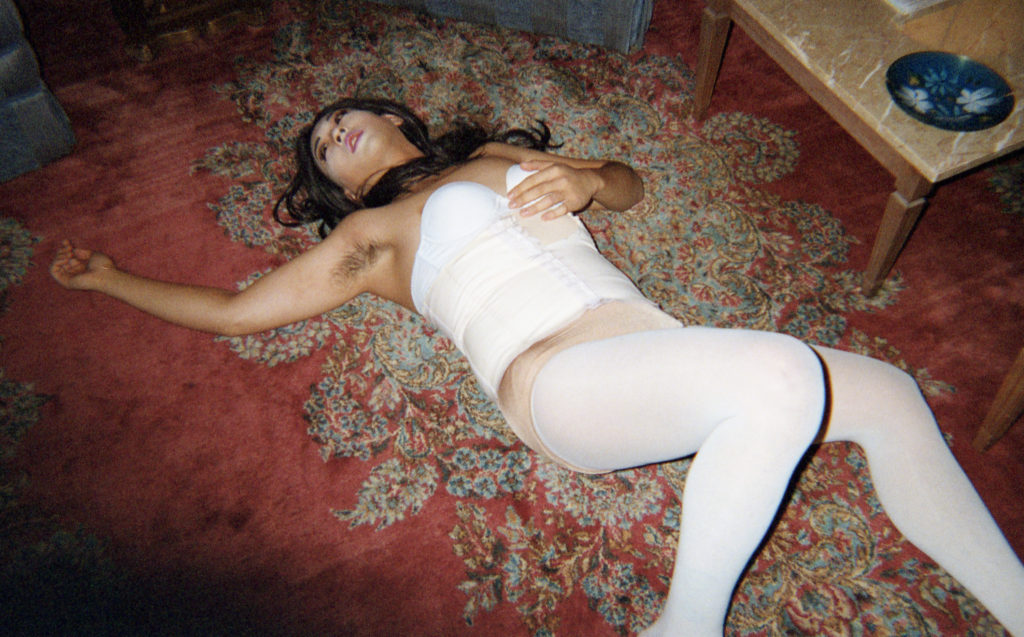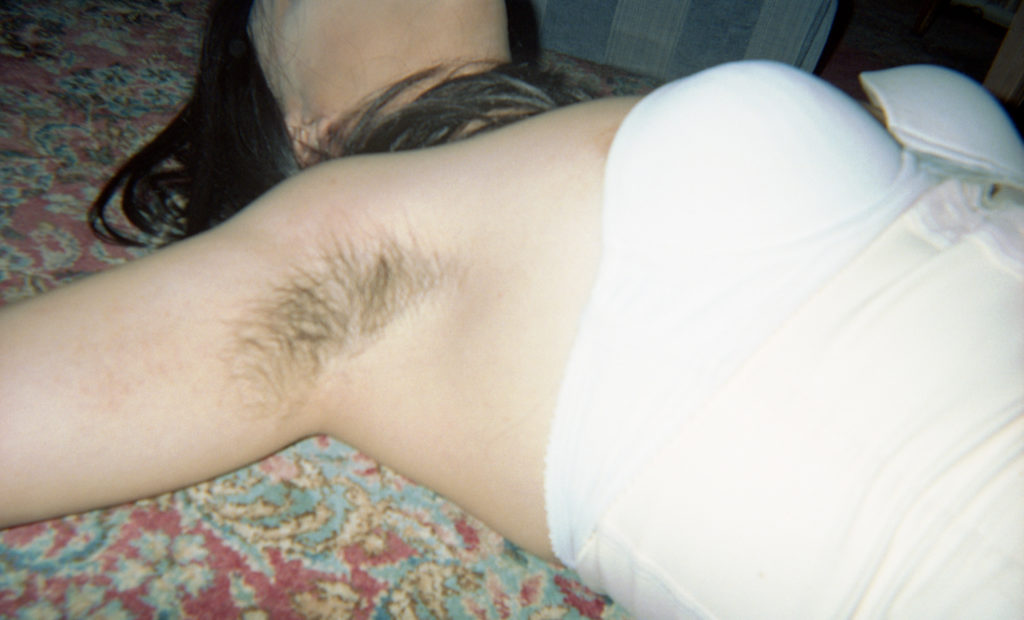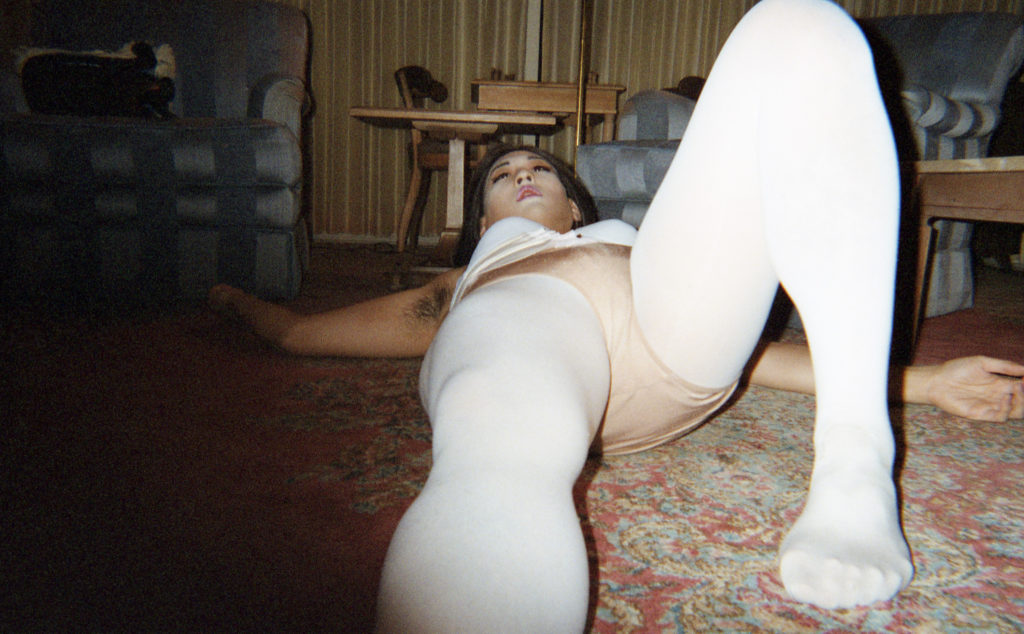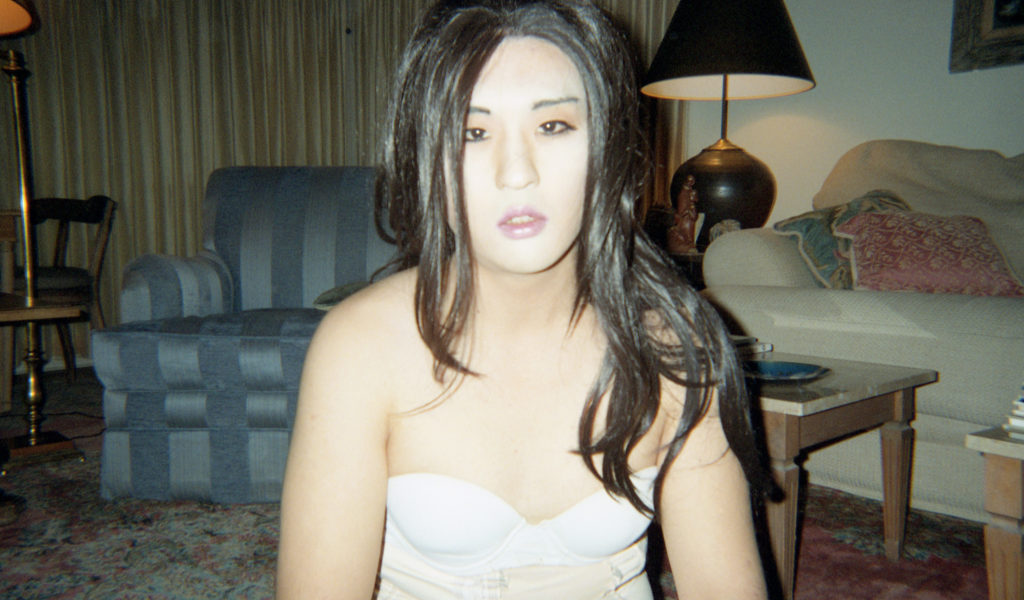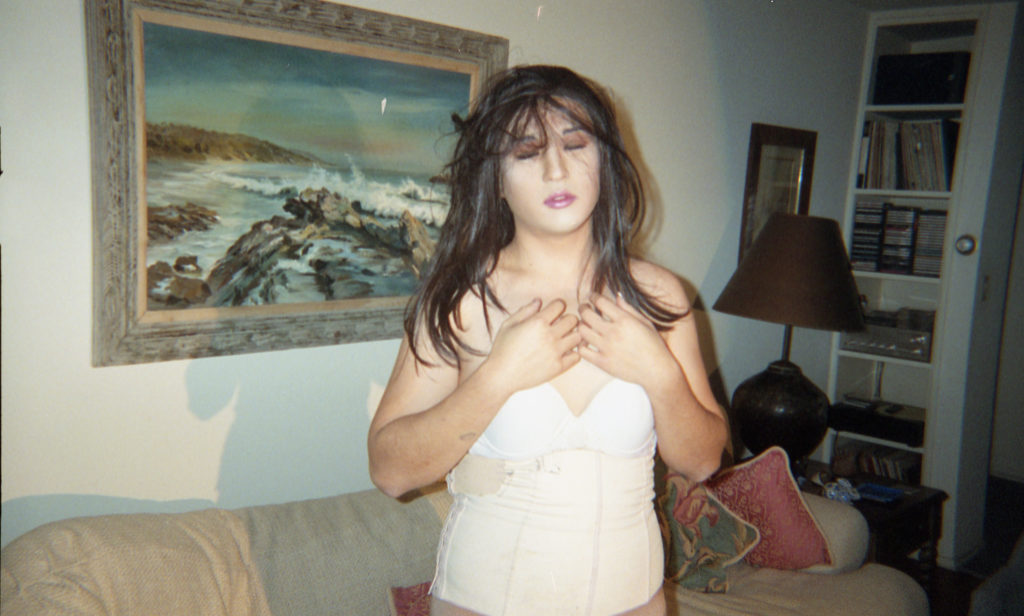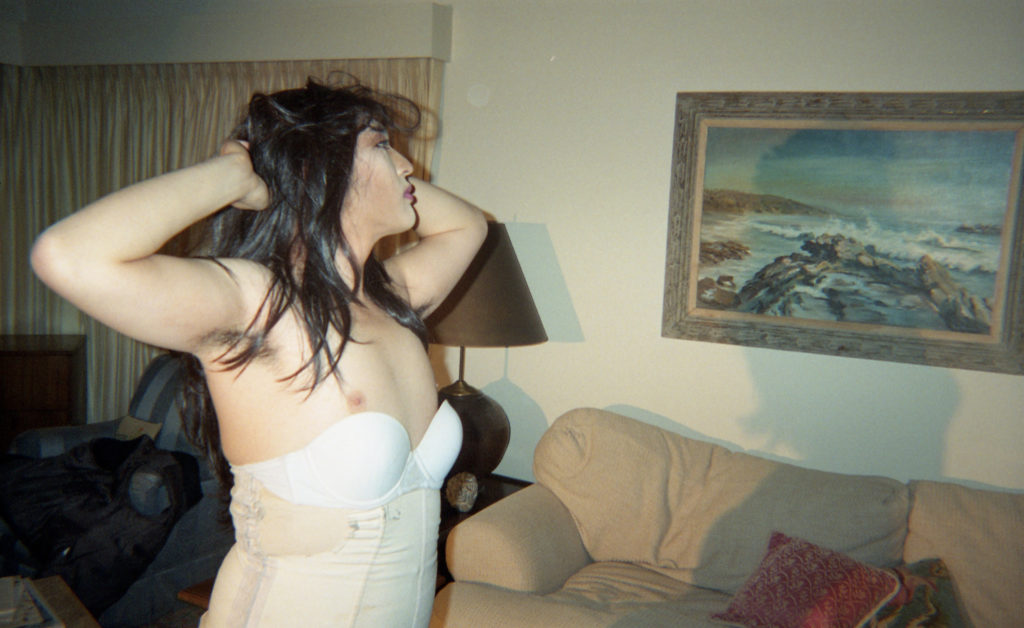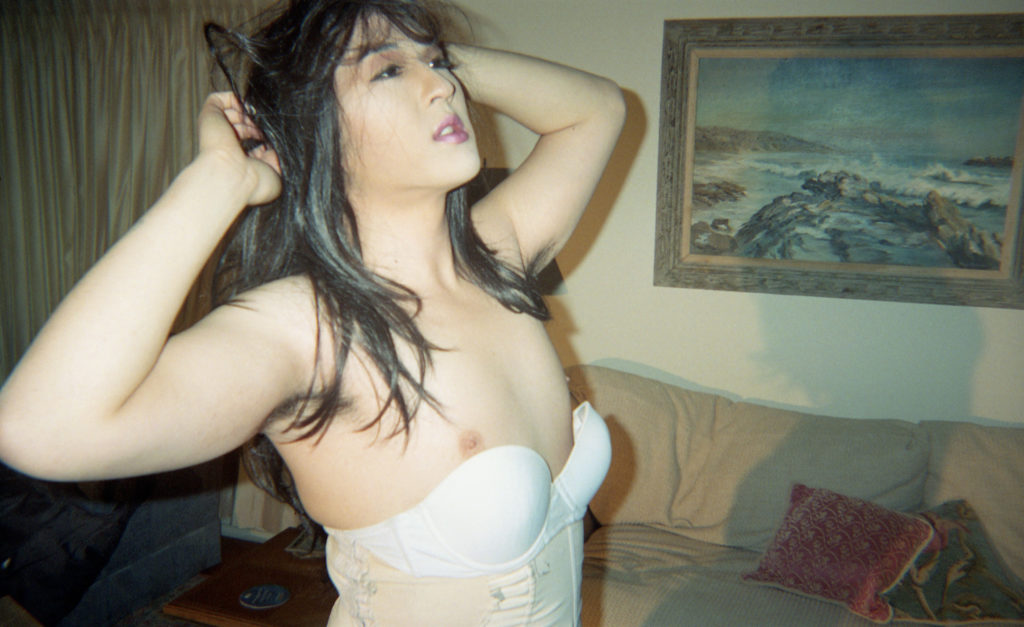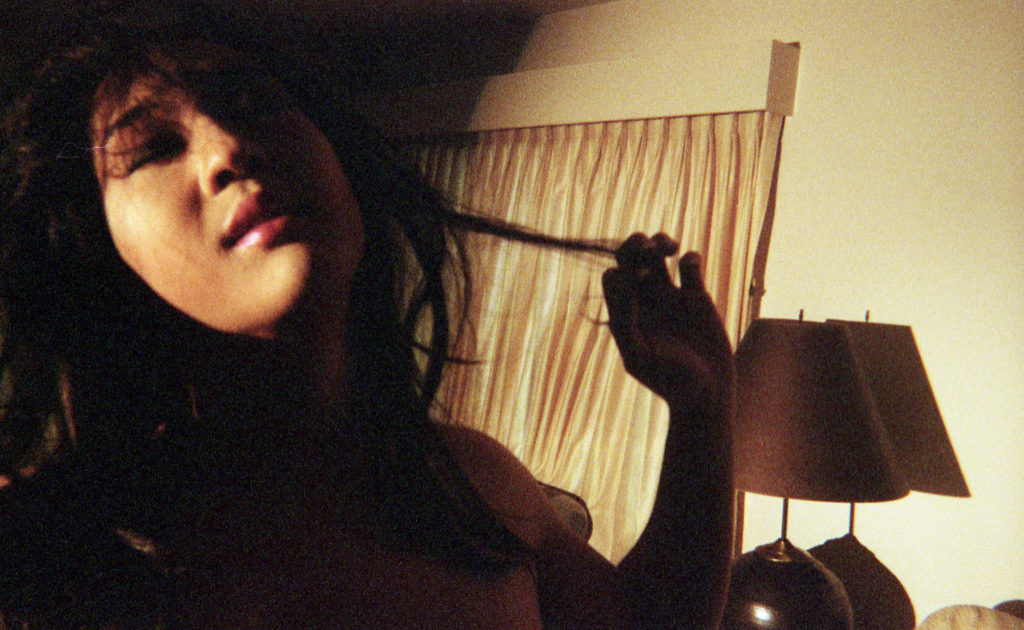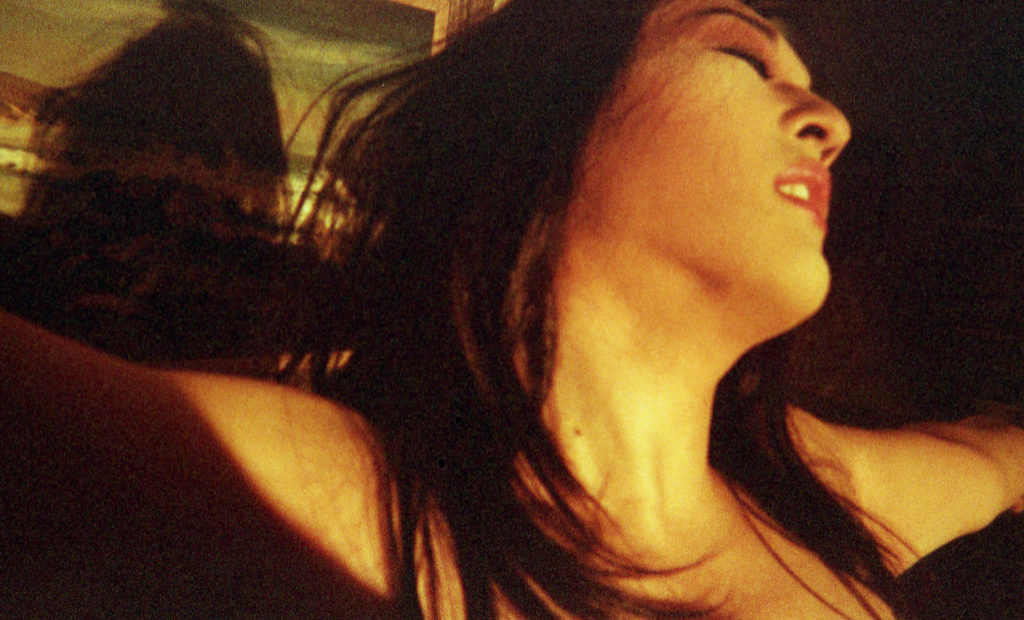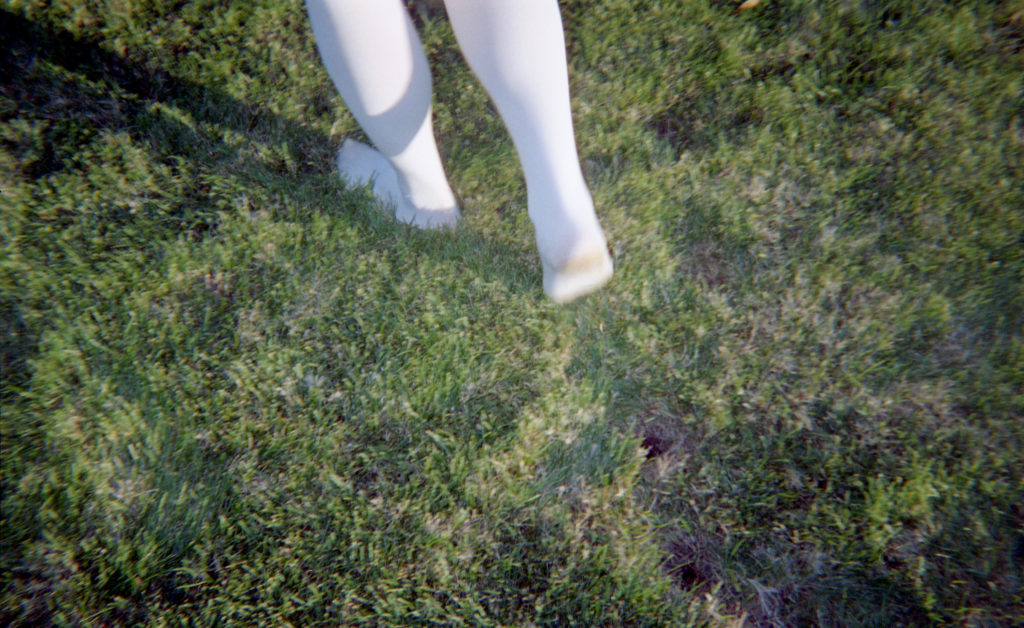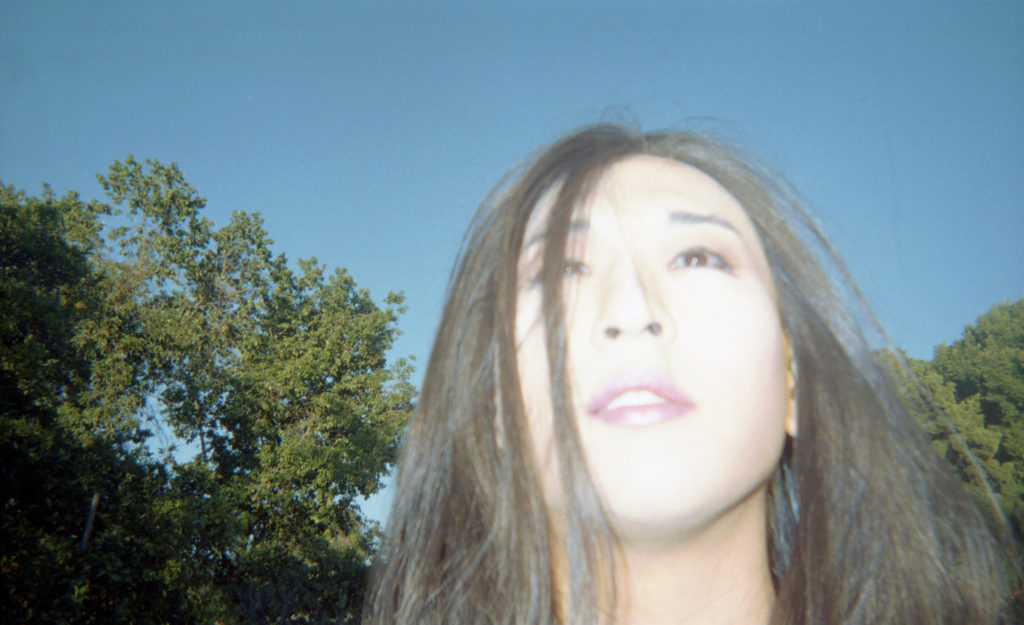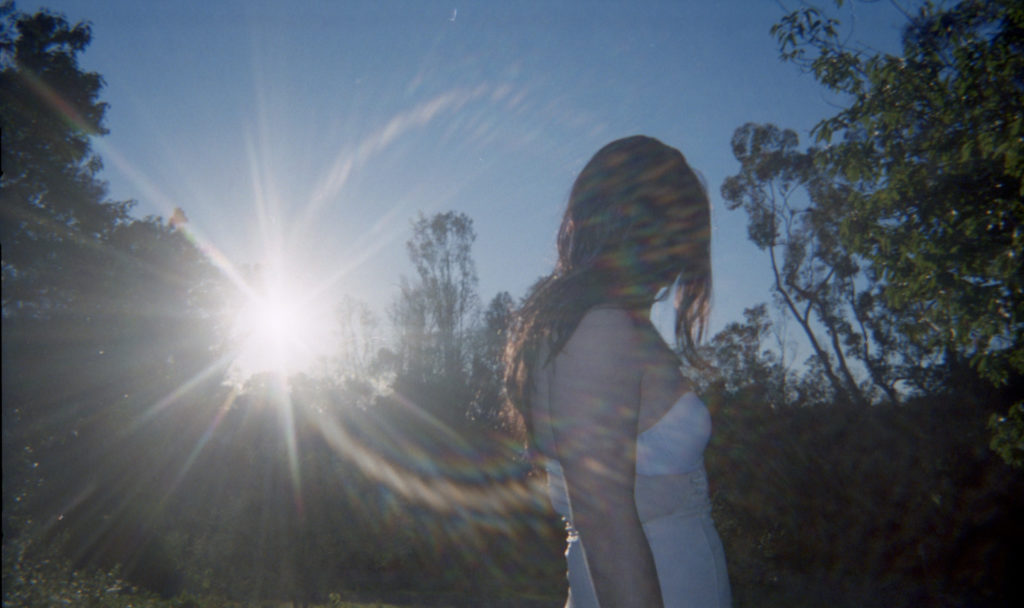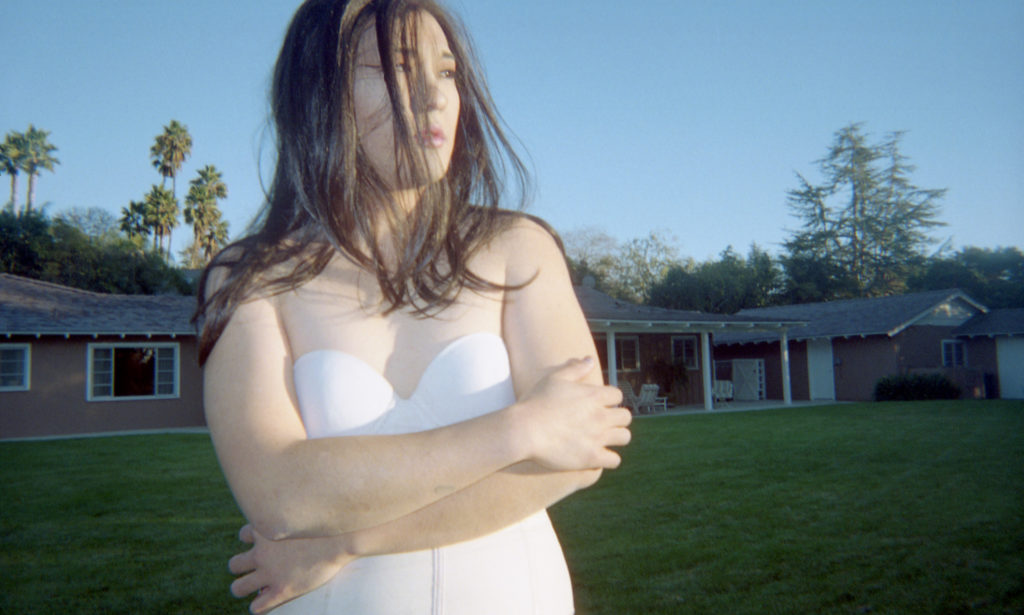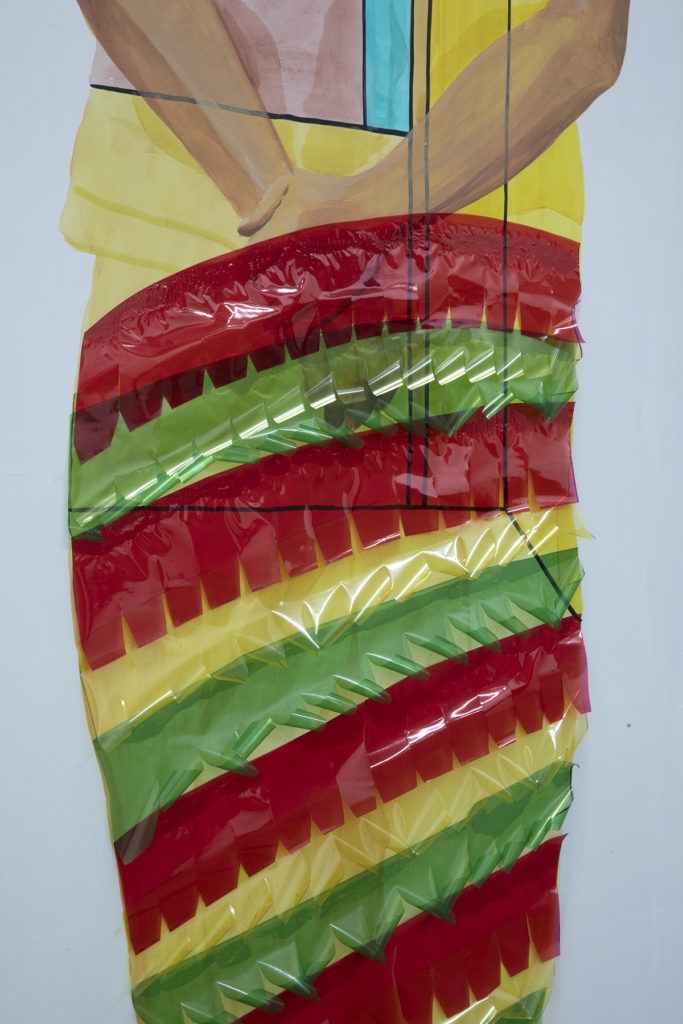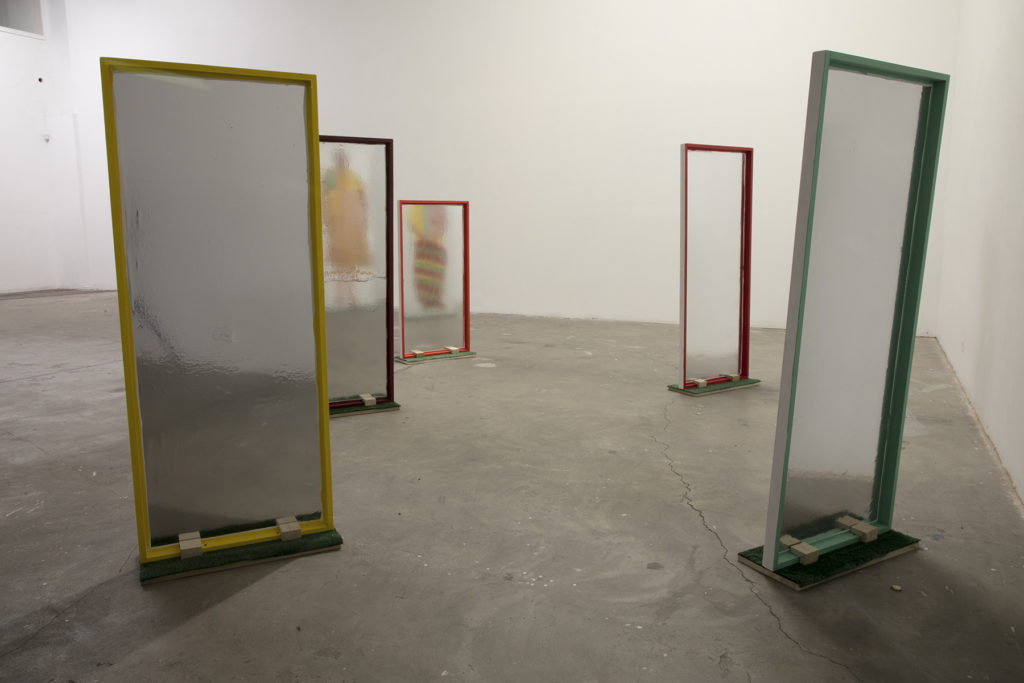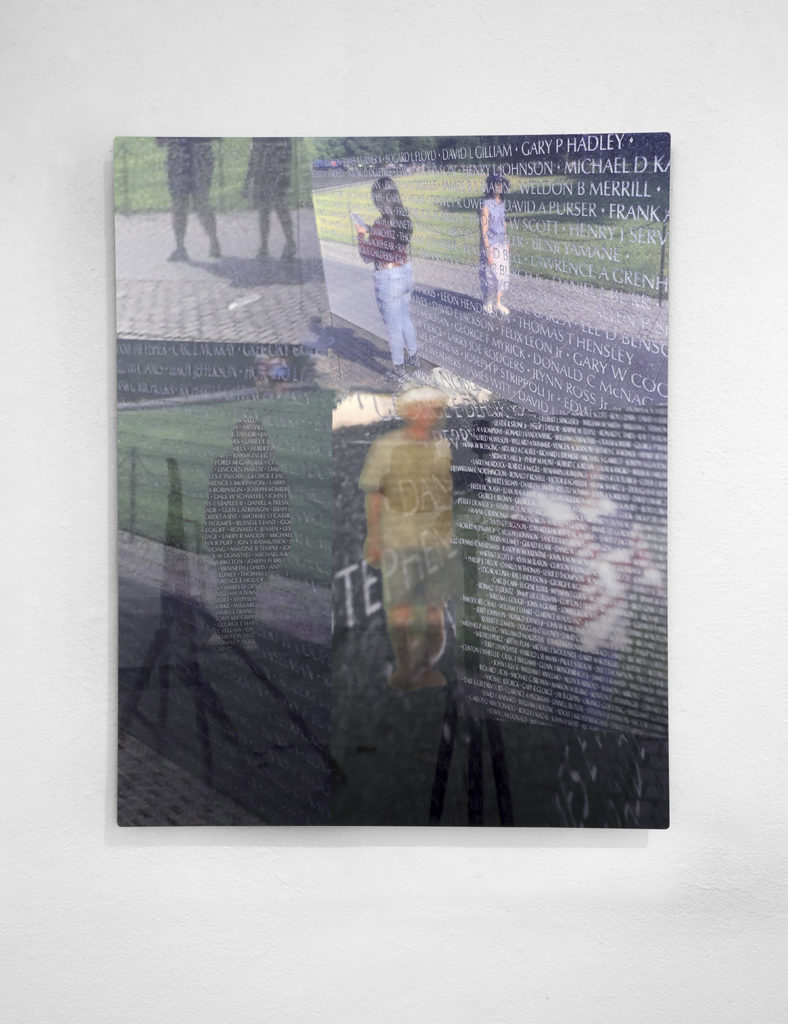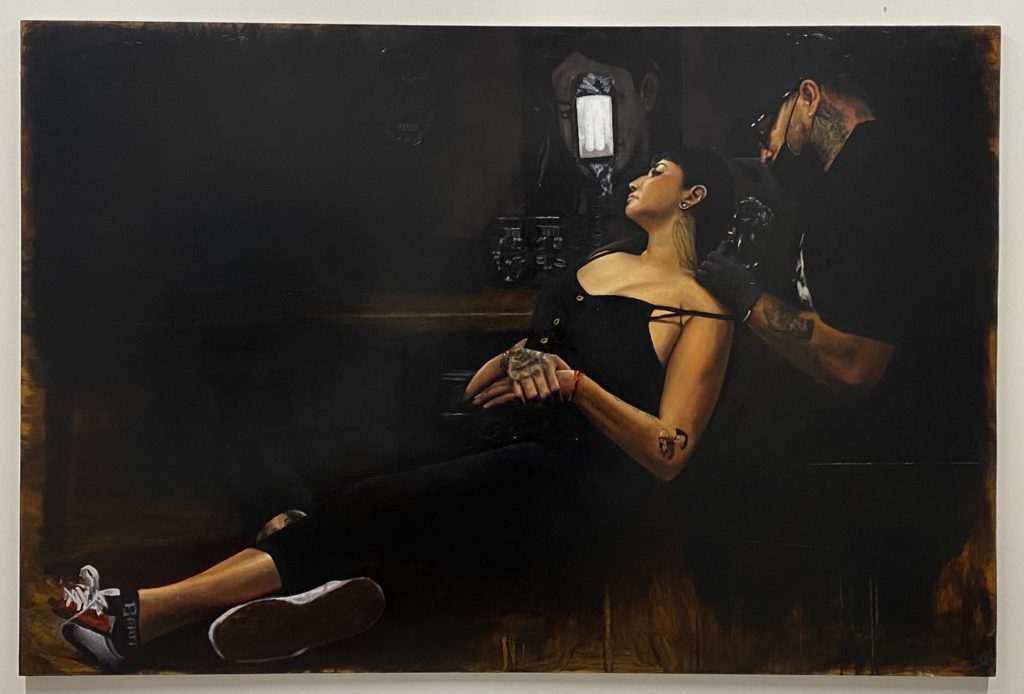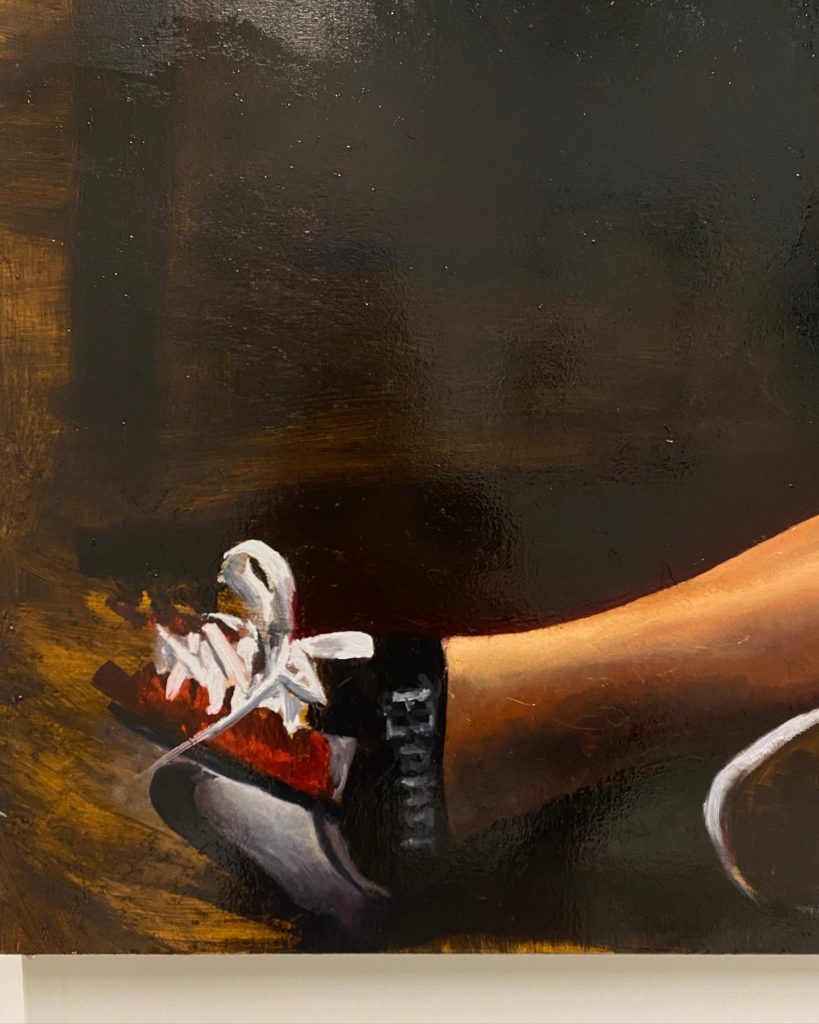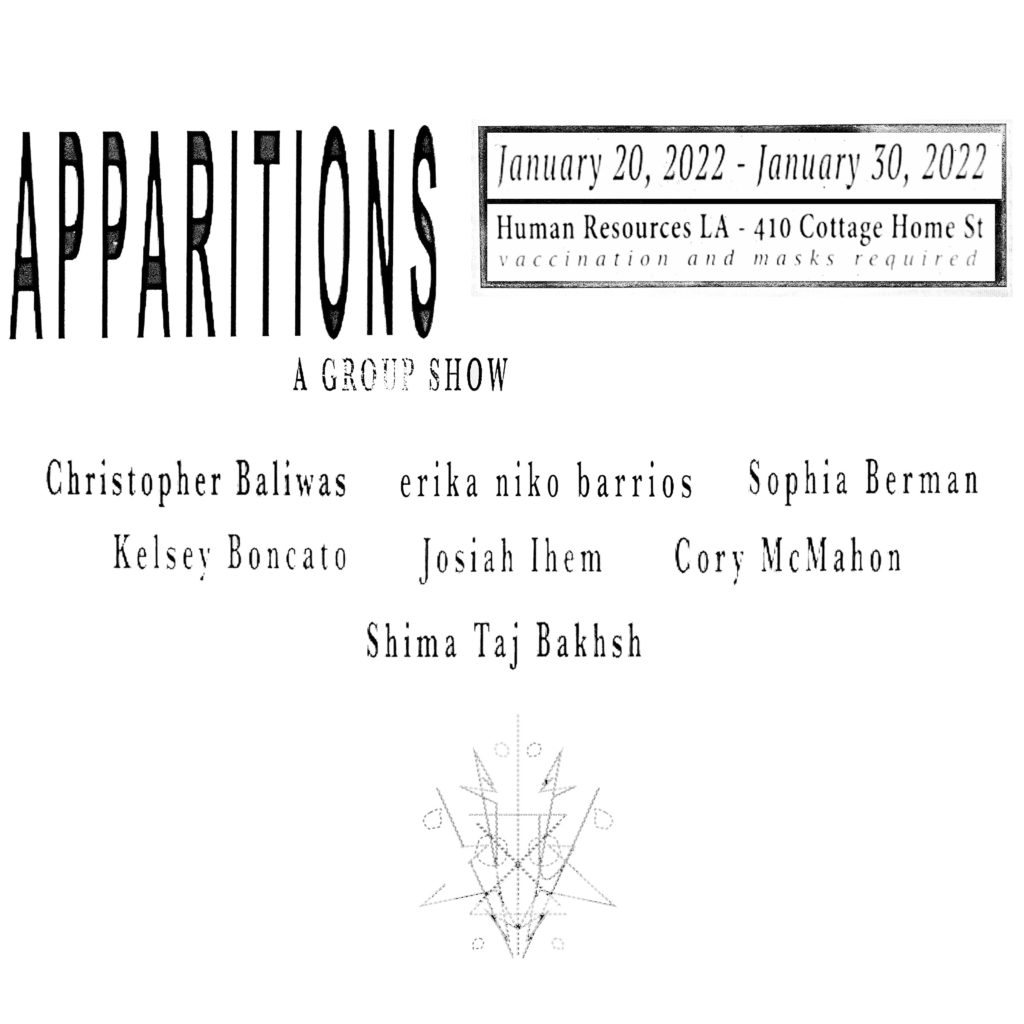
“Apparitions” is a balancing act – a suspension of being present, absent and everything in-between. Artists Christopher Baliwas, erika niko barrios, Sophia Berman, Kelsey Boncato, Josiah Ihem, Cory McMahon and Shima Taj Bakhsh have devoted the last year making work alone and sharing it amongst each other virtually. Their online group interactions have led to overlapping ideas on their recent works: a collection of bodily dissociation, obscurity, and displacement left to question their drifting states.
With their diverse backgrounds and satellite presence, the group stems from a virtual art salon facilitated by Miljohn Ruperto at the end of 2020. Artists were invited to question the opacity in the contemporary art world while sharing their past and current works. The space of conversation is held through virtual meetings, discussing peer feedback, group readings, along with conceptual and practical ideas in art. The salon has expanded to more guest participants –curators, gallerists and other artists who add to the conversation and overall curiosity of a practicing artist.
Reflective on the nature of the group’s inception, the work operates as a combatting force: transparency, distortion of sound, frames of erasure and movement, direction, while invasive shadow entities and rituals inform the space. Using both historical and phenomenological frameworks, the exhibition plays with themes on the body in relation to space, value, and identity.
With 2022 being the White Anniversary of Dodger Stadium and Human Resources location at the foot of Dodger Stadium, Christopher Baliwas continues developing these sets of work around the concept of “all time” and the idea of the camera obscura as a “home – a site of resistance” (bell hooks). Pulling from the history of displacement tied to Dodger Stadium and its audio/visual technology known as DodgerVision, the camera obscura becomes a “centrifugal work that begins with goodbye” (Nathaniel Mackey).
erika niko barrios’ installation, not in this dimension / chthonic echoes conjures creeping tentacular entities that indeterminately move between human and non-human realms. This sculptural work builds upon their 2021 exhibition entitled, chthonic ruins, and engages with that which is monstrous and demonic as sites of agency and allegories for queerness, absolute otherness and the limits of human thought.
Sophia Berman’s Idols engage cultural and personal (re)production. Carved up plastic sheets bearing faces of celebrities hang from thin metal thread. The pieces engage the tenuous and unsure places between what’s mass versus individually produced, replicable versus unique, delicate versus biodegradable.
Exploring potent aesthetics of nature, Kelsey Boncato’s digital photograph series depicts her handmade paper wasp nests mounted in a variety of domestic and structural spaces. Playing as architectural interventions, the sculptures are positioned above a shower, in a youth’s bedroom, basement stairs, a meditation bench, a tea room in a garden, and a playground slide. Titled Intrusive Nest and Malevolent Surveillance, Boncato sneaks her nests into intimate, private, and vulnerable situations –hijacking the power of nature.
Josiah Ihem’s Awaiting, Cypher, Passenger video composites together headless tai chi forms under a full moon. Against saturated color framing, the dual bodies’ movements are offset. The sequential poses and transitions in between them reflect rhythm, energy, and element of water while representations of the moon’s push and pull mirror a sense of imitation, vitality, and decay.
Travel frames are the protective shrouds that artworks are transported to and from in. They are an important component in the preservation of art, but also in the exhibition of artworks. Cory McMahon’s photographs play upon the idea of art being autonomous from the numerous forces that bring it to display.
Shima Taj Bakhsh’s “No city is in the city” is part of an ongoing project that observes, embodies, and speculates about the cultural and social implications of an anonymous gravestone located in Qom, Iran. The only identifying information marking the gravestone is “Kaboutar, the child of Ali” (کبوتر فرزند علی). In Farsi, the name “Kaboutar” translates to pigeon. The pigeon’s visibility in the city and their “unruly” characteristic, along with the invisibility of the anonymous grave, all question the authority and hierarchy in urban order. “No city is in the city” combines forms inspired by the Iranian cemetery’s architecture with newspaper archives reflecting on pigeons as city dwellers and constant companions of humankind.
Through methods which imitate, distort, transfer, and fragment images, all together, the group exhibition presents diverse works examining the inherent qualities of apparitions and how these notions call to a kind of resistance to territories, perception, and contact.
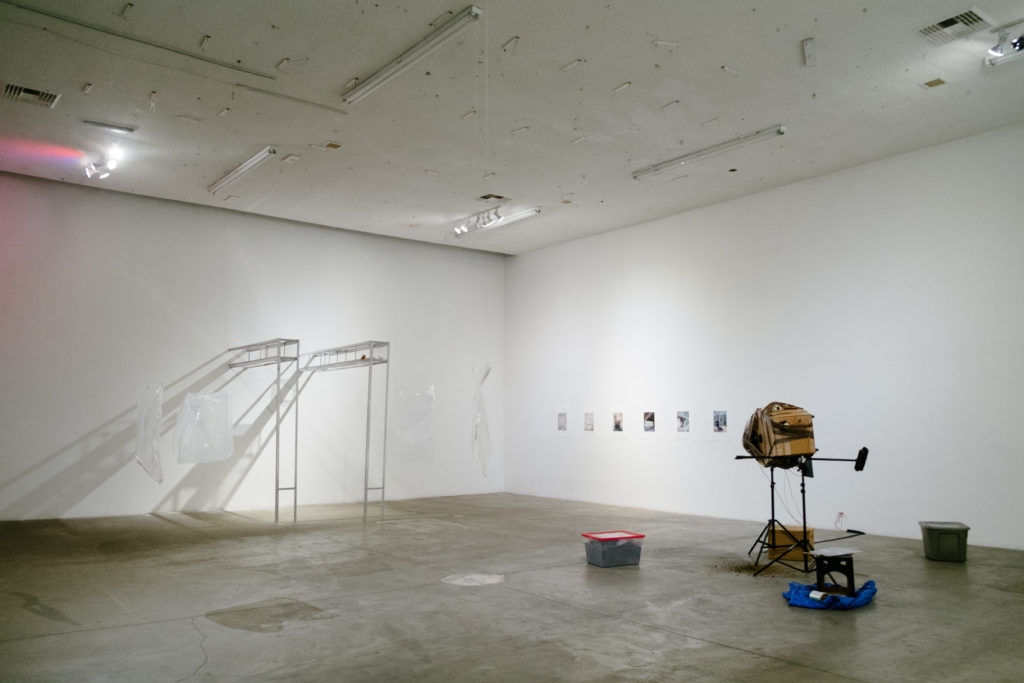
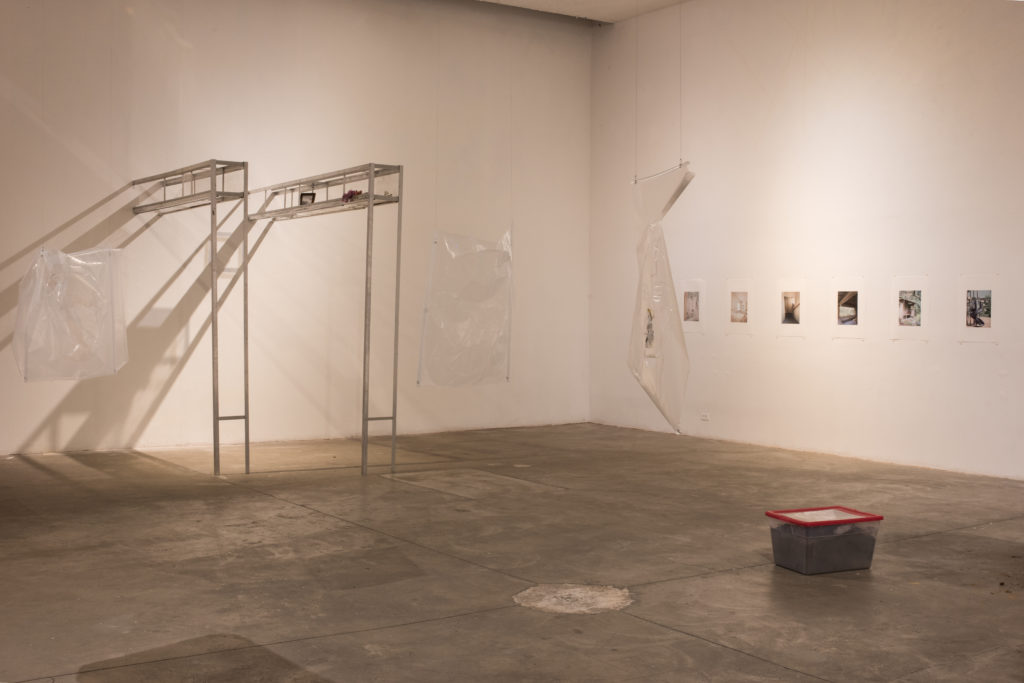
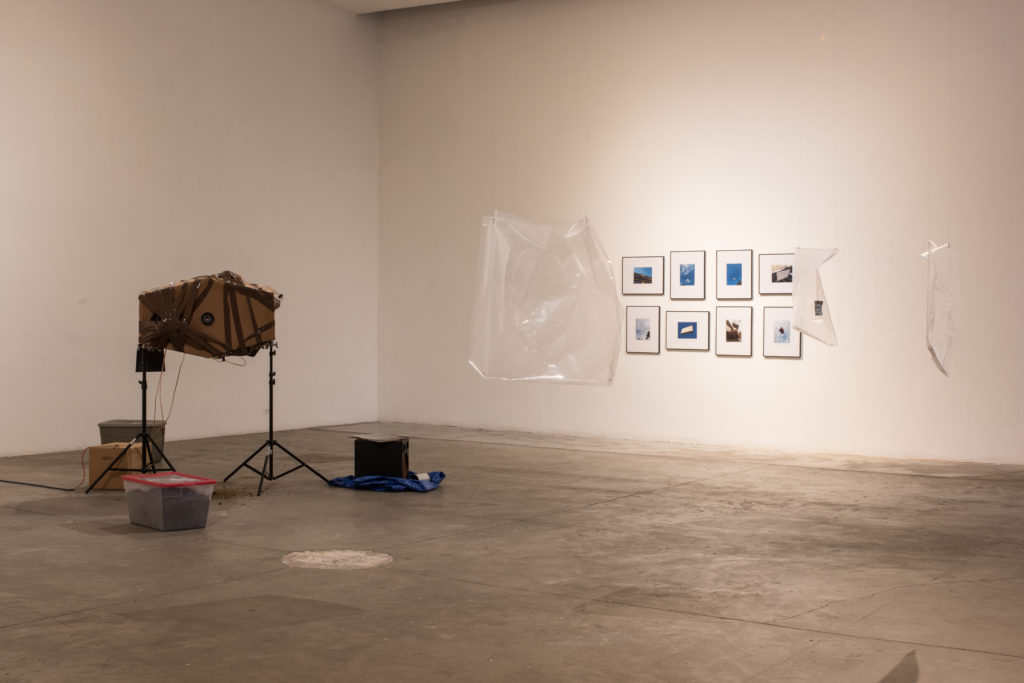

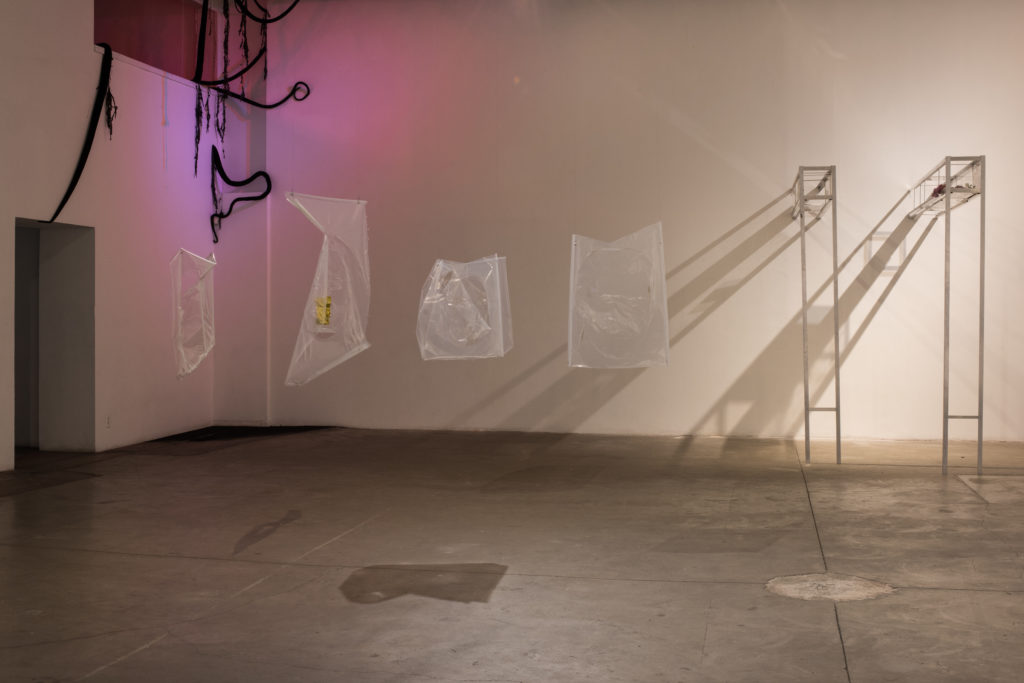
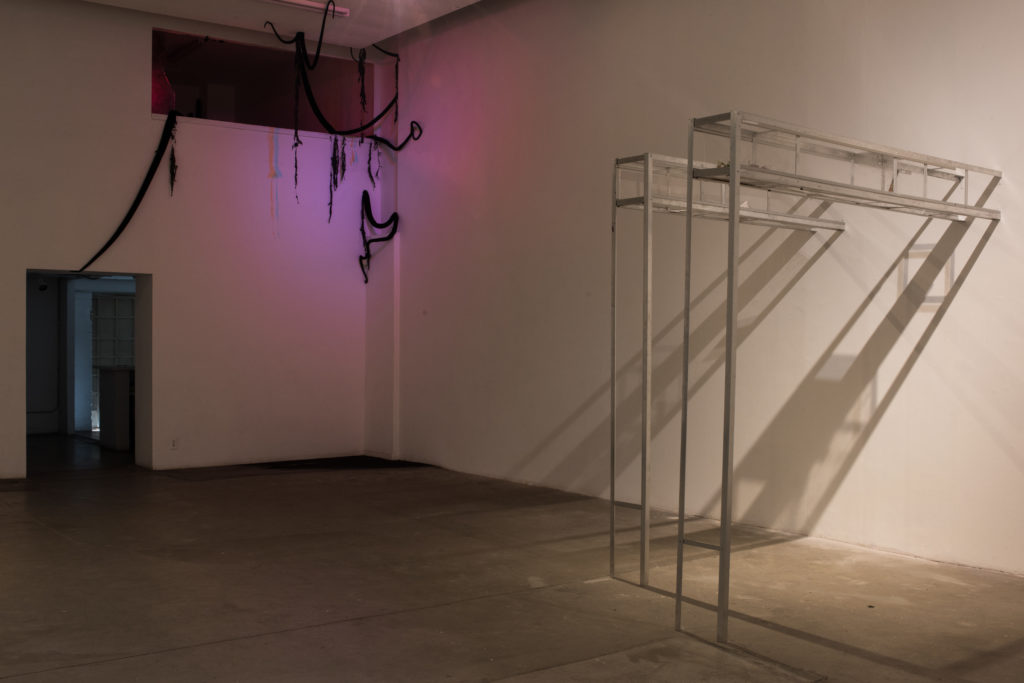
Christopher Baliwas is a Filipino American interdisciplinary artist born in the Bay Area and based in Los Angeles. He is the eldest son of Jackie and Thor Baliwas, and a new father. With the practice of photography as a homeplace for him, it is often taken over by mediums of sound, sculpture, or writing. Baliwas’s work seeks for an inversion of perception through the camera obscura, the unspectacular, the rudimentary, and stories of family as an attempt to question time, site(sight), and ownership. Under the alias, reallynathan, Baliwas independently released the album “O” in 2020, which has served as a portal to develop his own(?) relationship to the concept of “All Time”.
erika niko barrios (b. 1986, Los Angeles) is an interdisciplinary artist who lives and works in the greater Los Angeles area. They received their M.F.A. from California State University, Long Beach in 2020 and their B.A. in gender & women’s studies from University of California, Berkeley in 2011. They create sculpture and installations that engage historical discourses on madness, the unhuman, and magic through ritual processes and a queer lens.
Sophia Berman is a Los Angeles based artist. Her work spans photography, video, sculpture, drawing, and writing, exploring participation and replication in pop and sub cultures.
Kelsey Boncato is an artist and animator who works in drawing, video, and sculpture. Her recent work presents phenomenological relationships and possibilities questioning the control of identity, time, and nature. Boncato’s interactive multimedia work FOREST in collaboration with sound composer Daniel Oldham premiered at SXSW and exhibited internationally in 2019. Notable group exhibitions include Subconscious Sensibilities at Site Gallery, Sheffield Doc Fest UK, VR@OIAF at Ottawa Art Gallery, and was awarded Best Experience in VRHAM! Hamburg, Germany. Recipient of the 2016 Discovery Scholar Prize, she holds a B.A. in Art from the University of Southern California with an emphasis in intermedia and printmaking. Boncato lives and works in Los Angeles.
Josiah Ihem is a freestyle dancer and interdiciplinary artist based in Palm Springs California. He is a California State Bakersfield alumm and is from a world renowned dance crew named Squishy Docious based in the Inland Empire/Los Angeles. His recent work focuses on themes and concepts relating to images, presence, and sequences to examine human behavior.
Cory McMahon is an intermedia artist from Las Vegas, Nevada. He received his MFA from the University of Nevada Las Vegas. His work often confronts anxieties of belonging, identity, and home. These themes are undeniably influenced by his formative years on the periphery of a city eclipsed by the industry of selling dreams and desires.
Shima Taj Bakhsh is an Iranian interdisciplinary artist currently residing in Long Beach. Much of her work is concerned with questioning the material conditions of bodies and borders. She engages with a variety of media to create architecture fragments that embody nonlinear narratives shifting from generation to generation. The time-based, sculptural configurations in her work represent a constant liminal state wherein cultural and social edges rub up against each other, encounter other timelines, and bridge histories.
